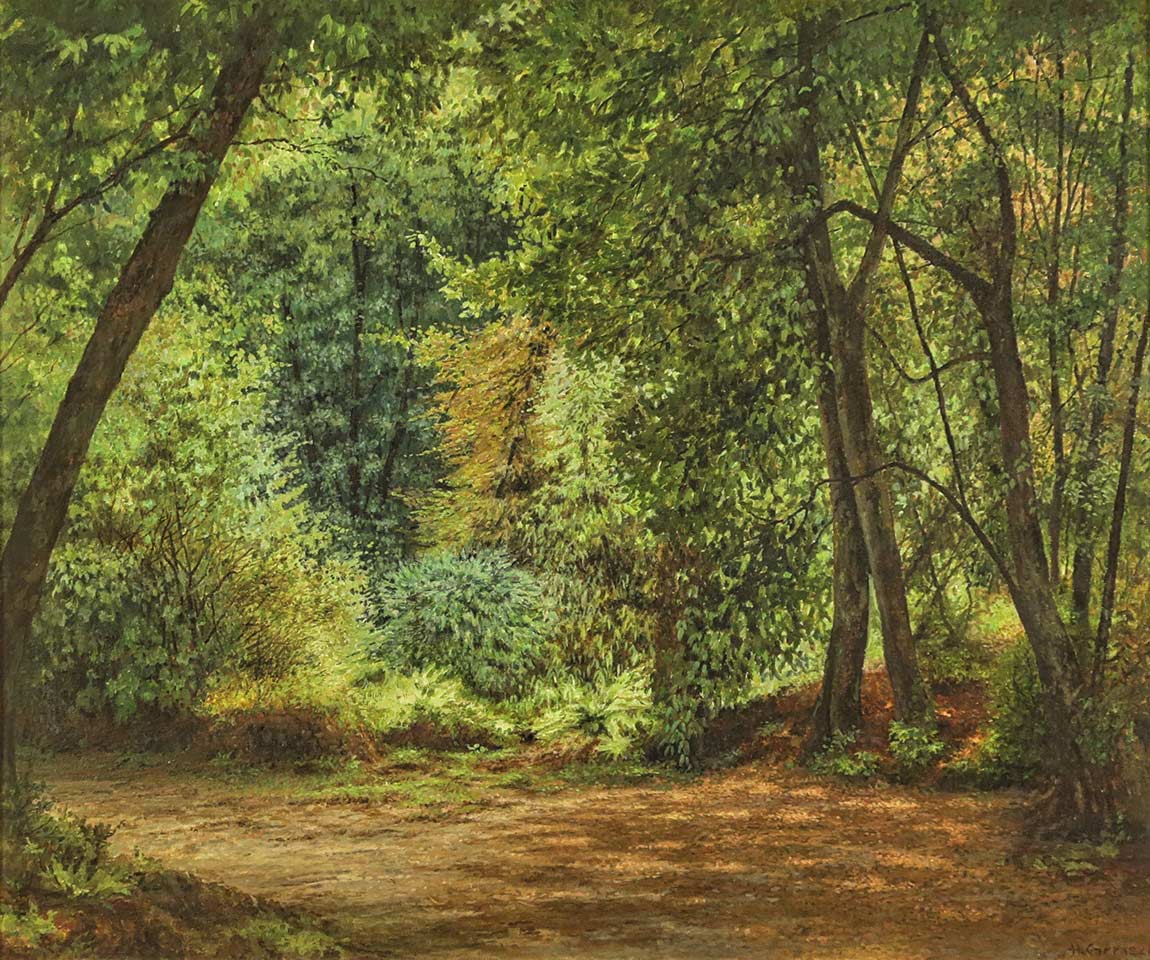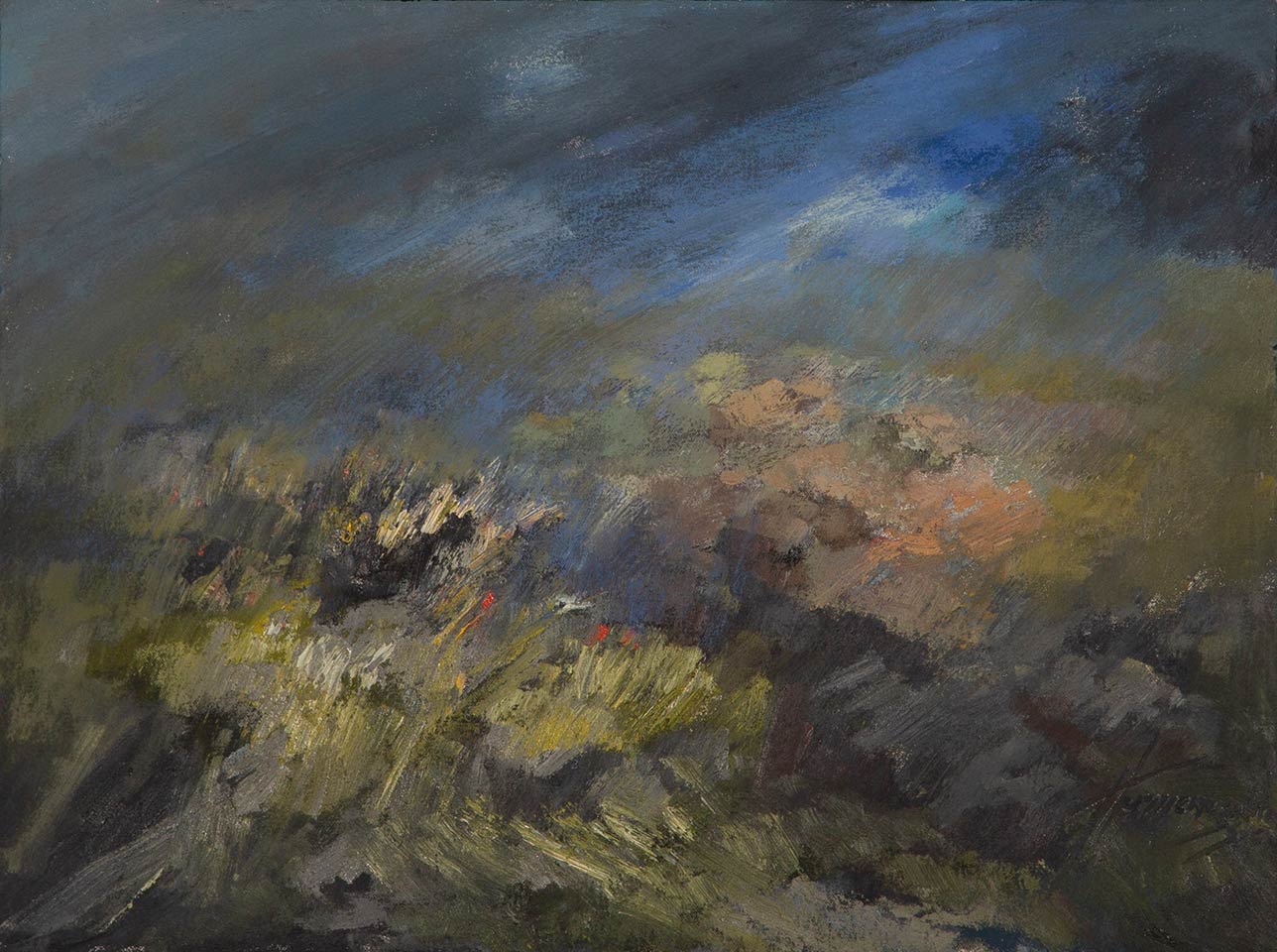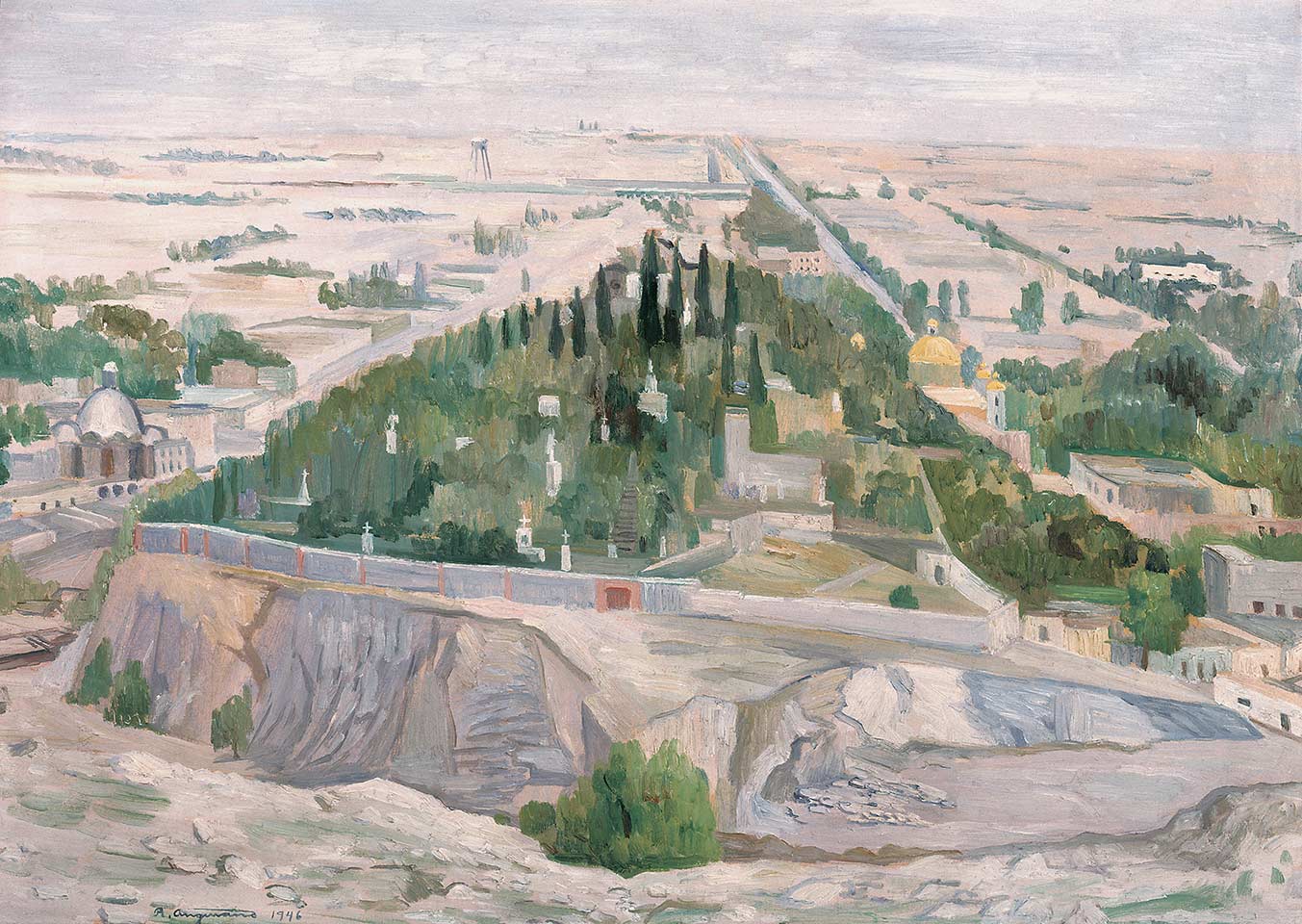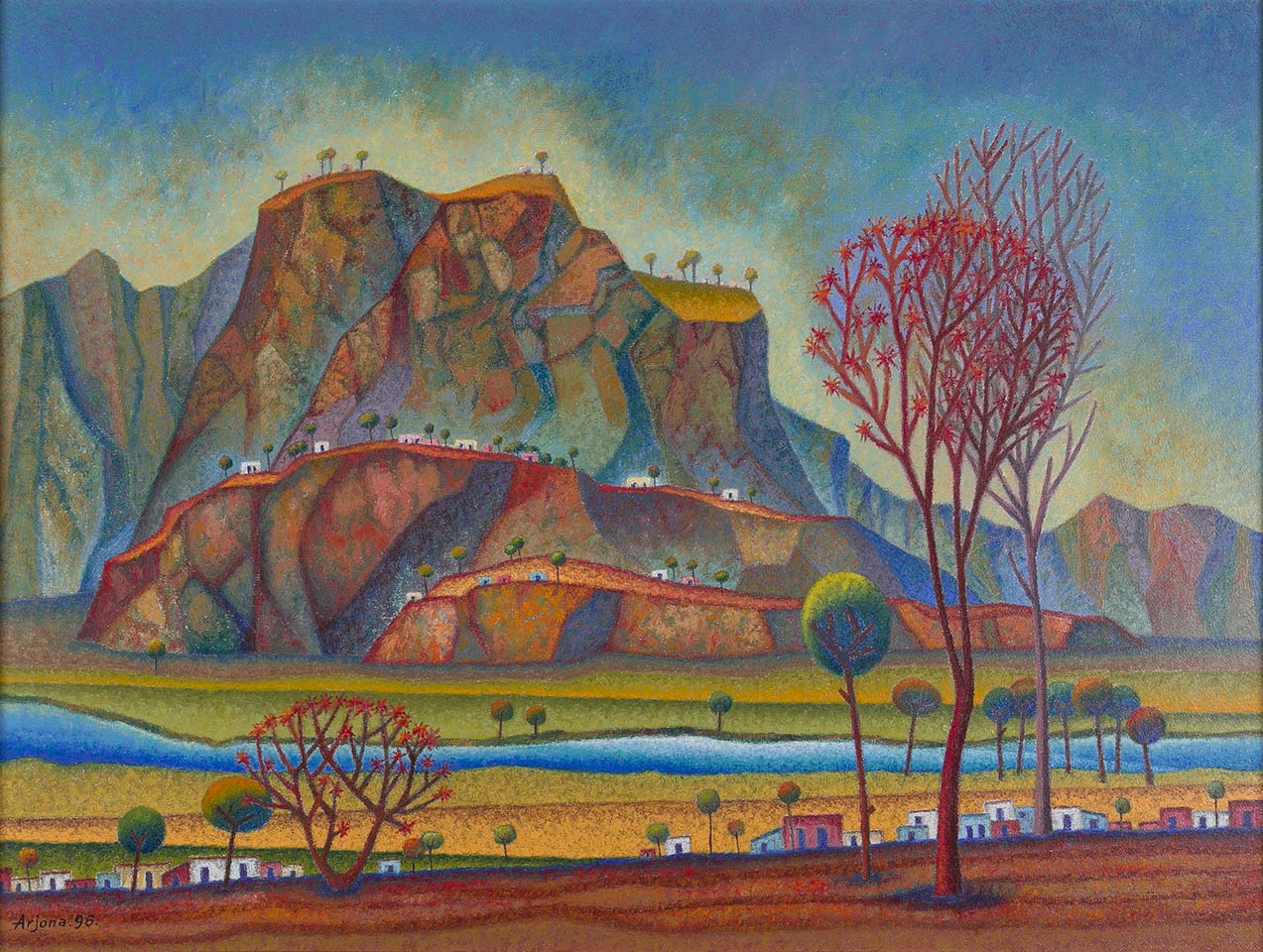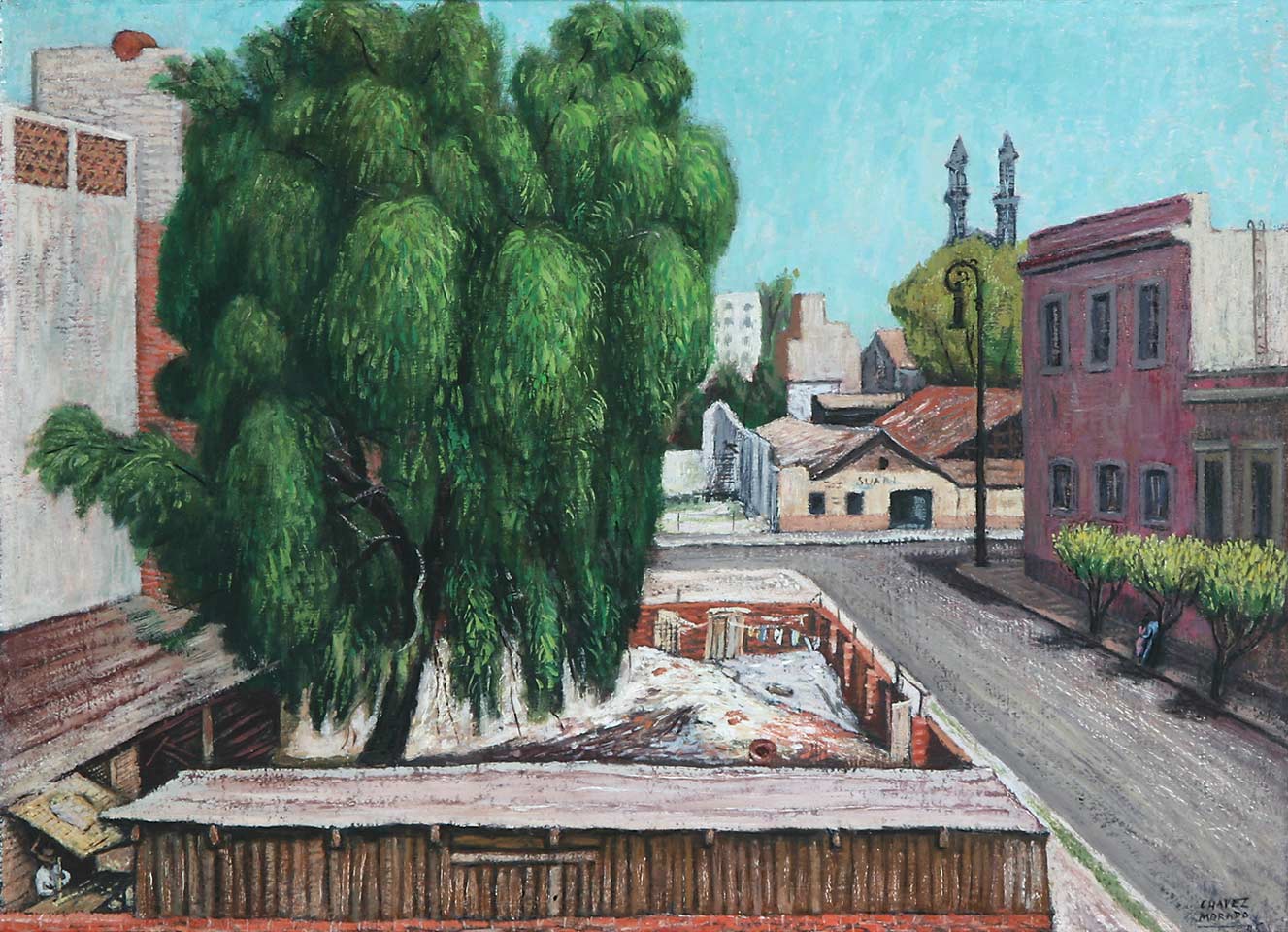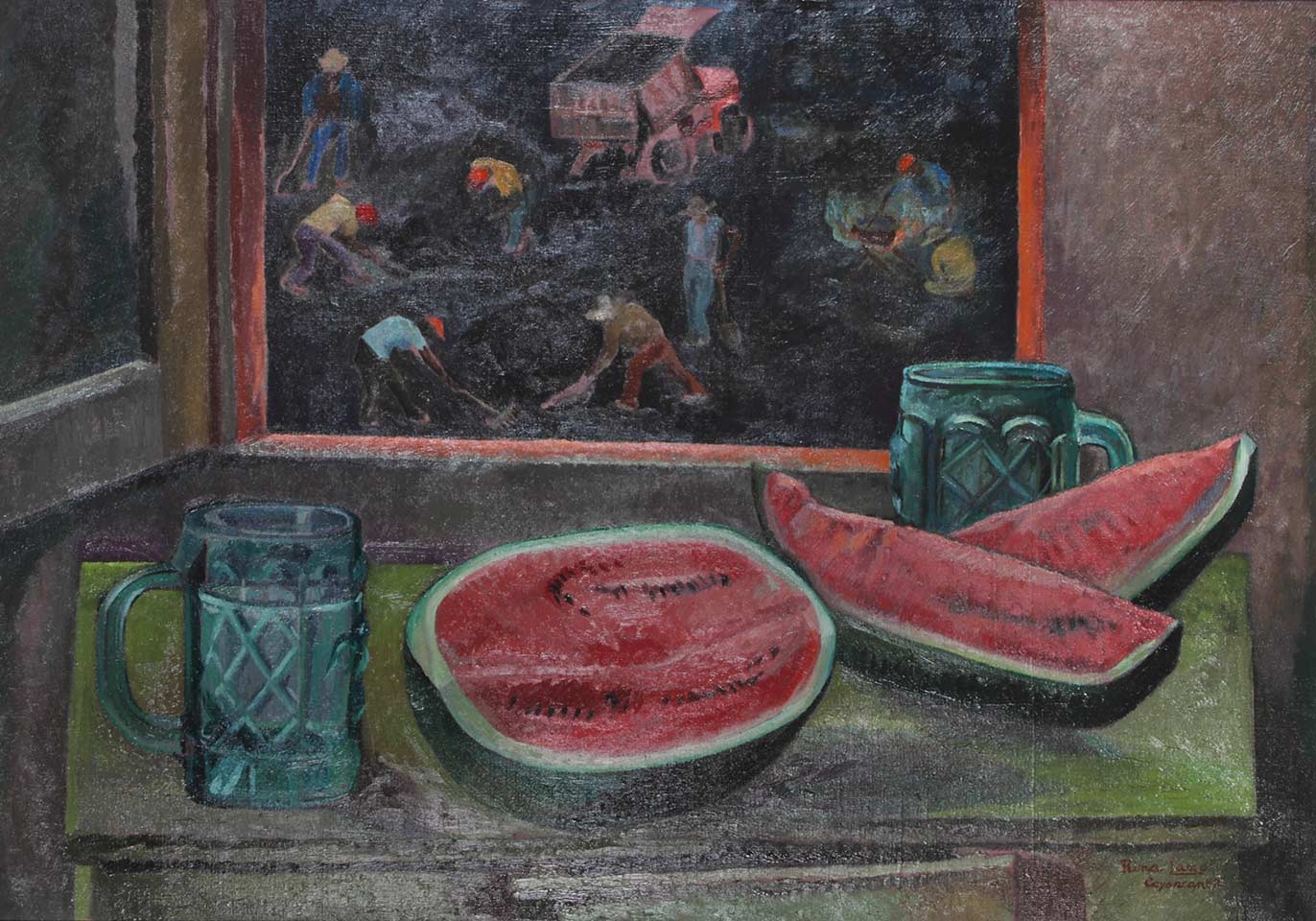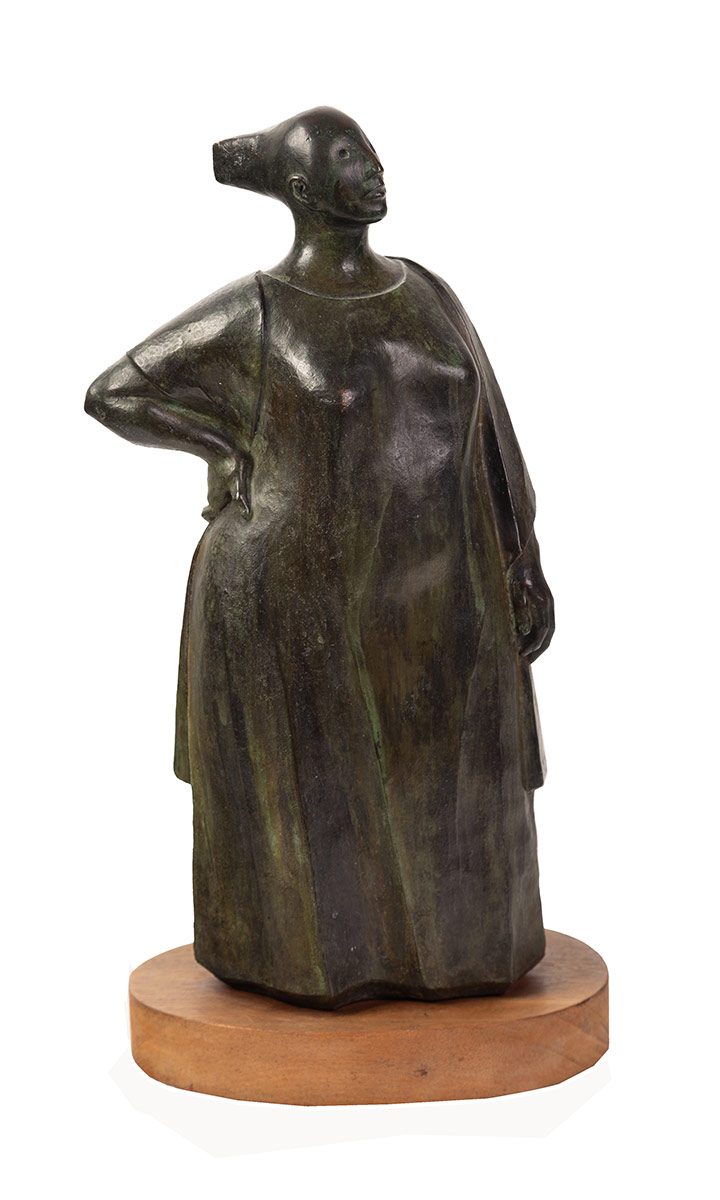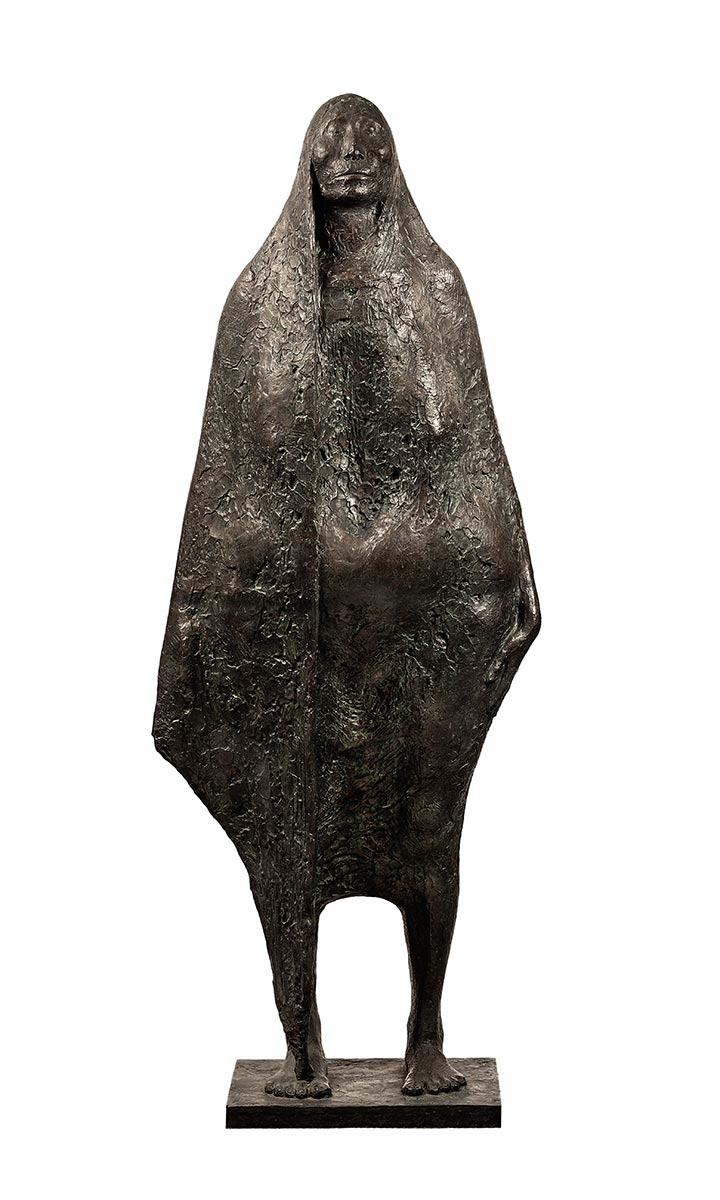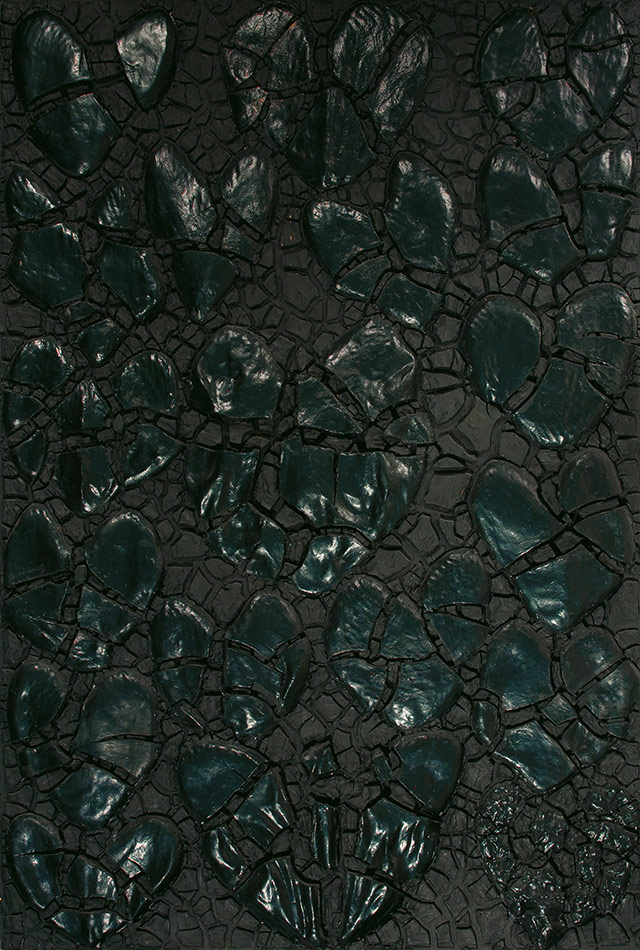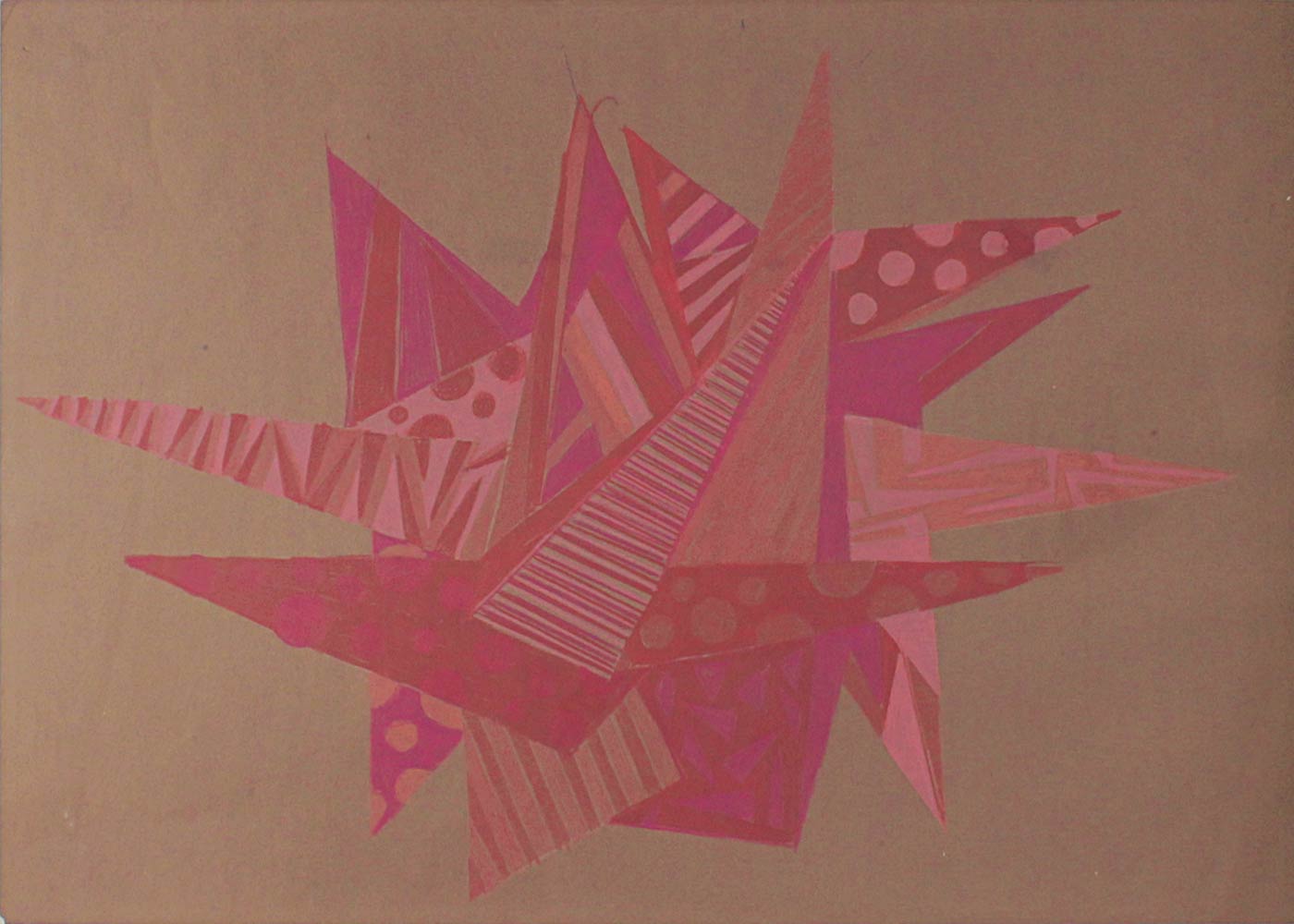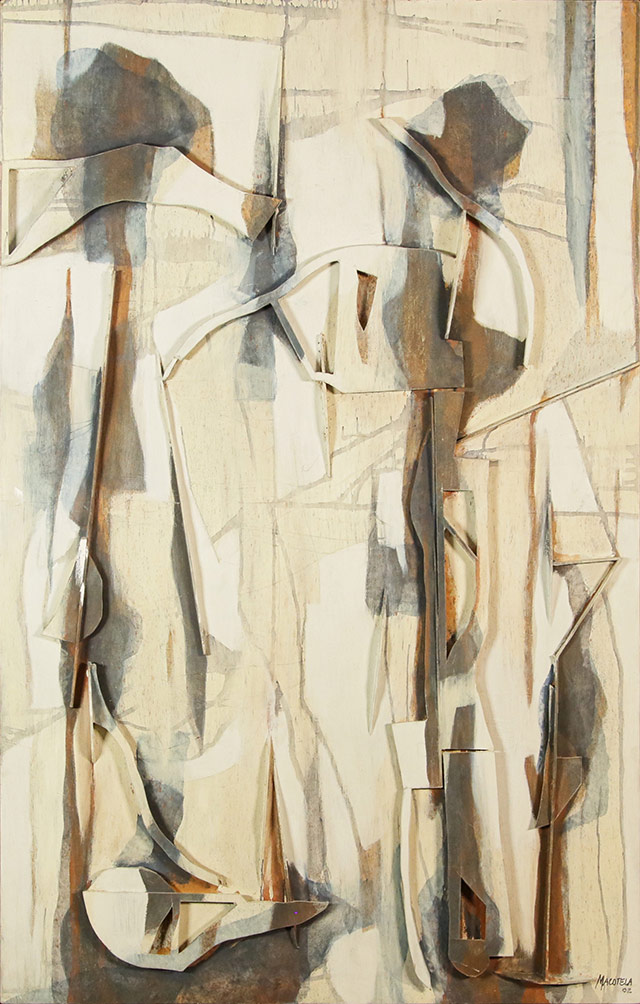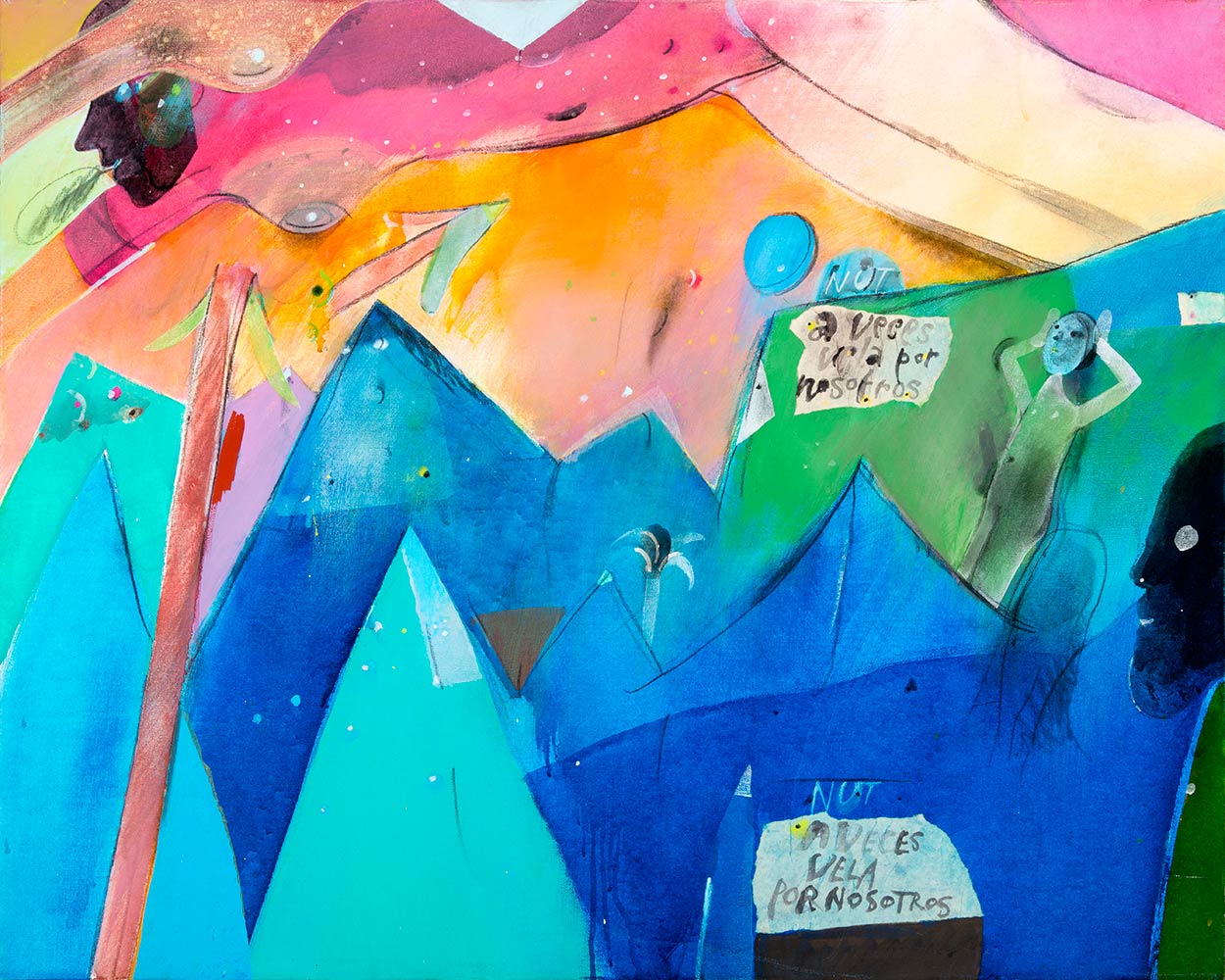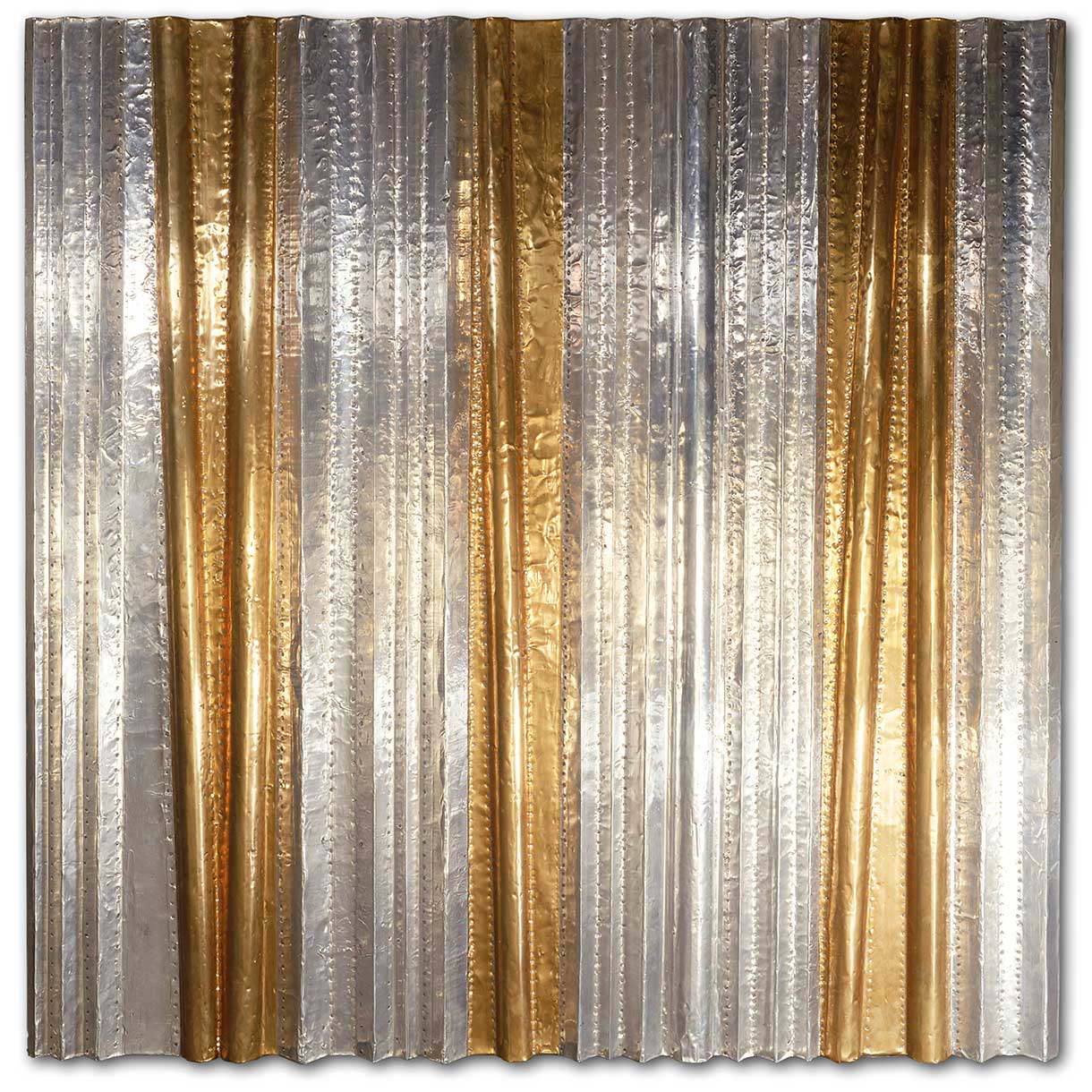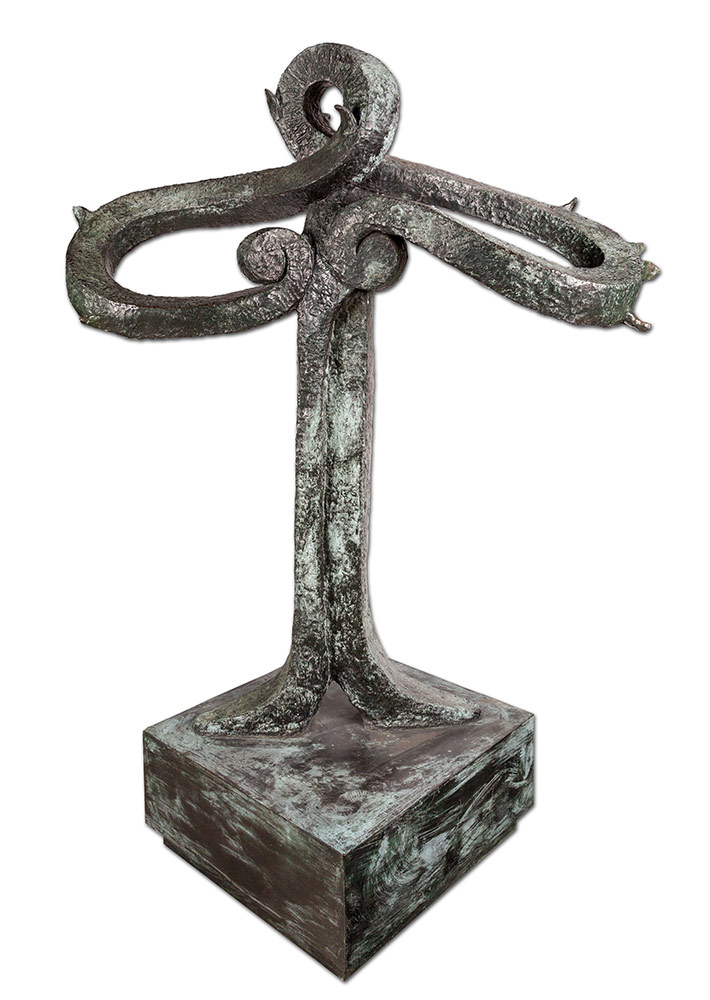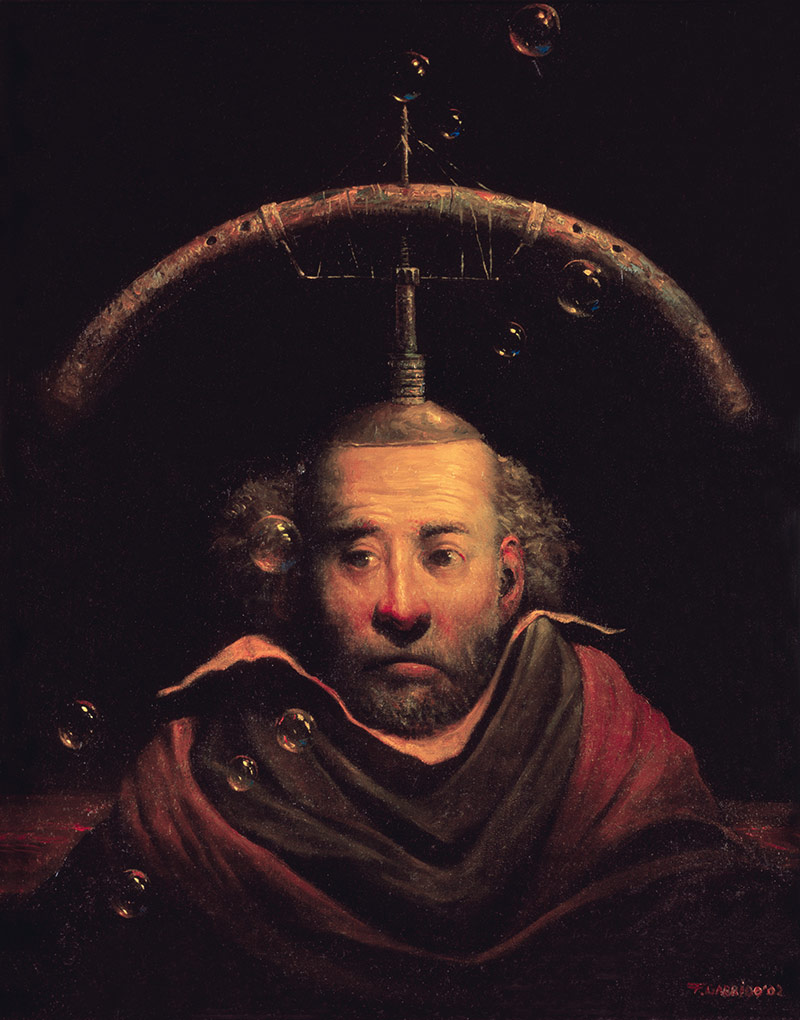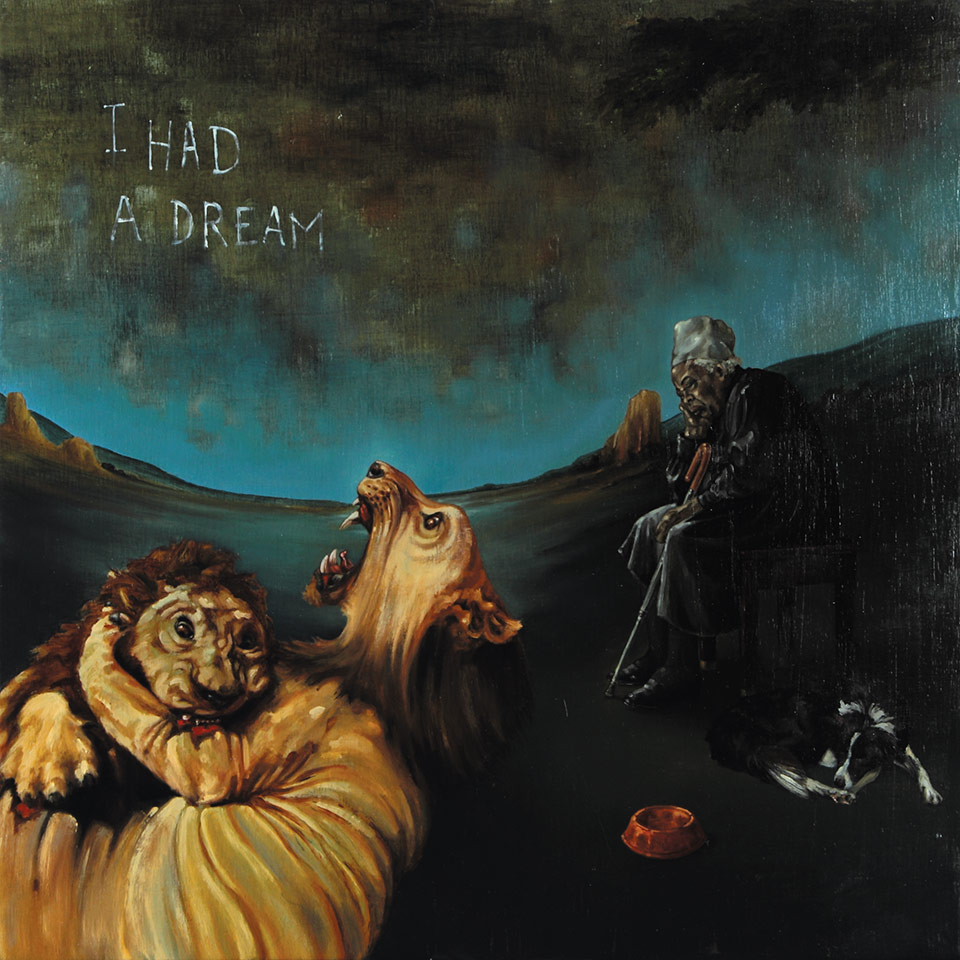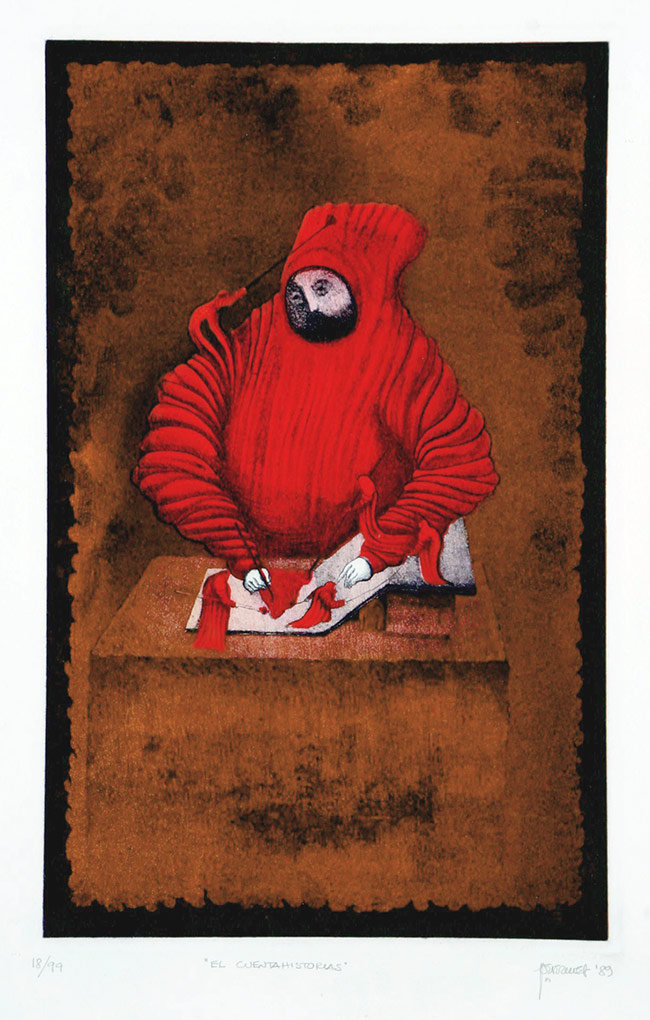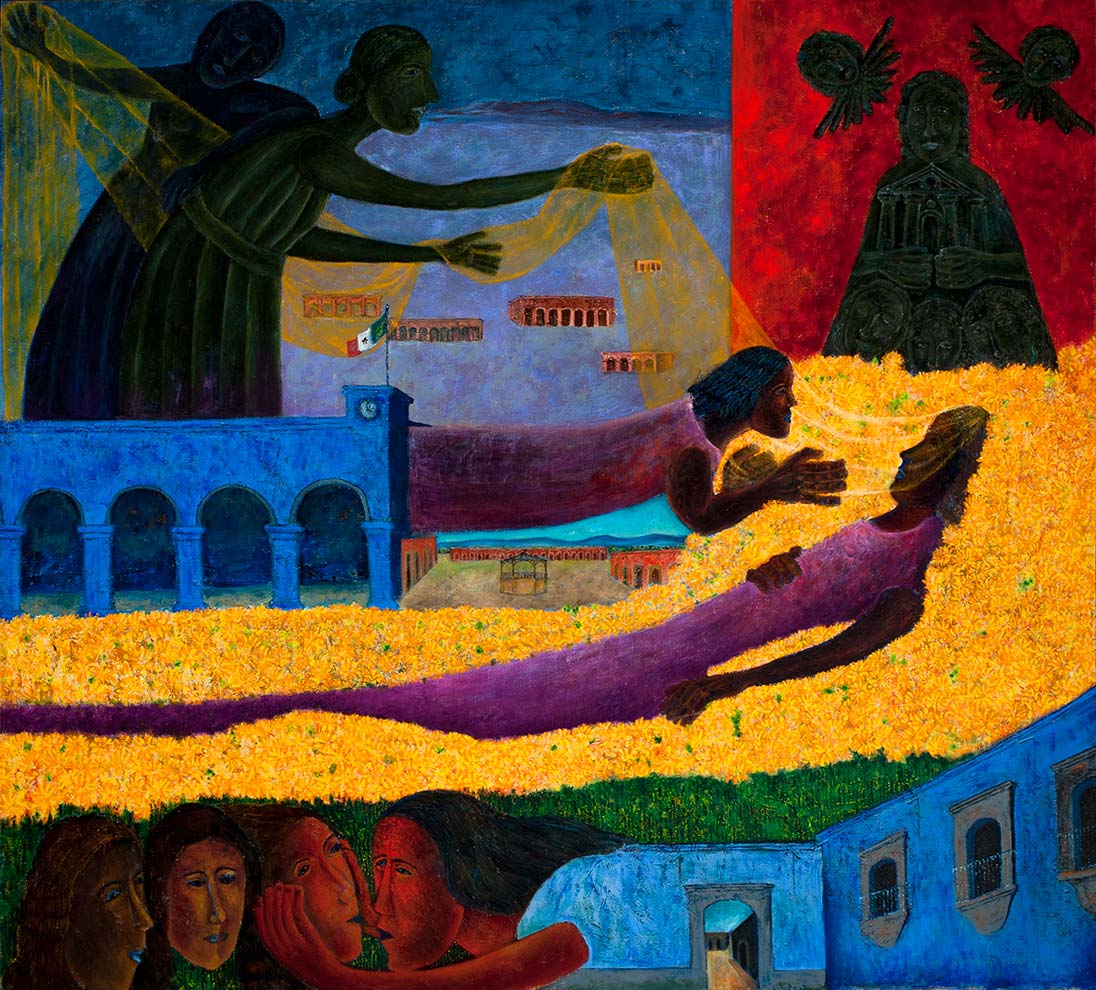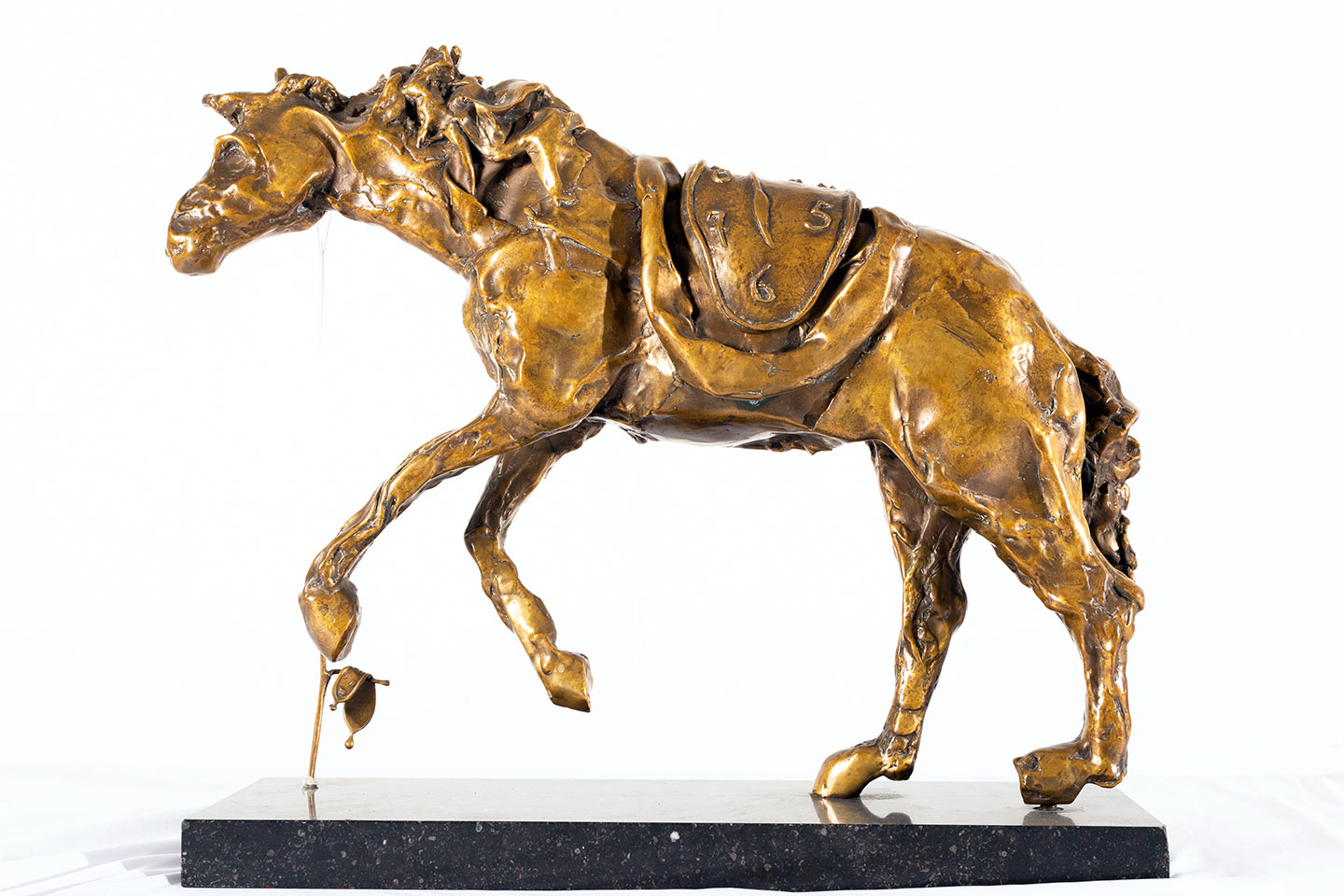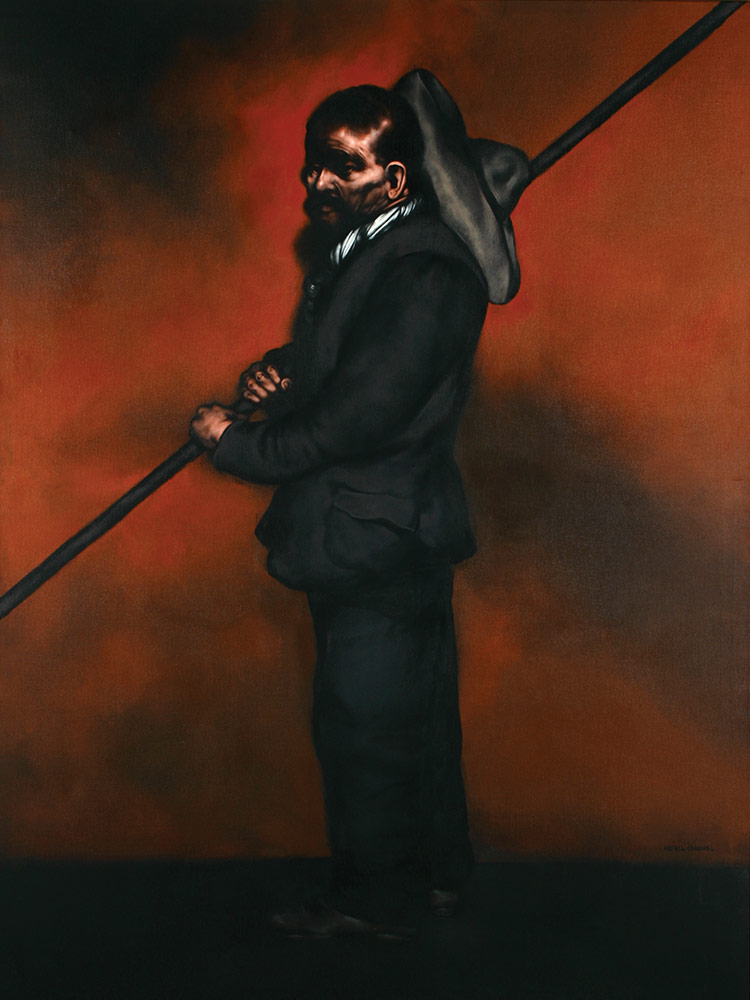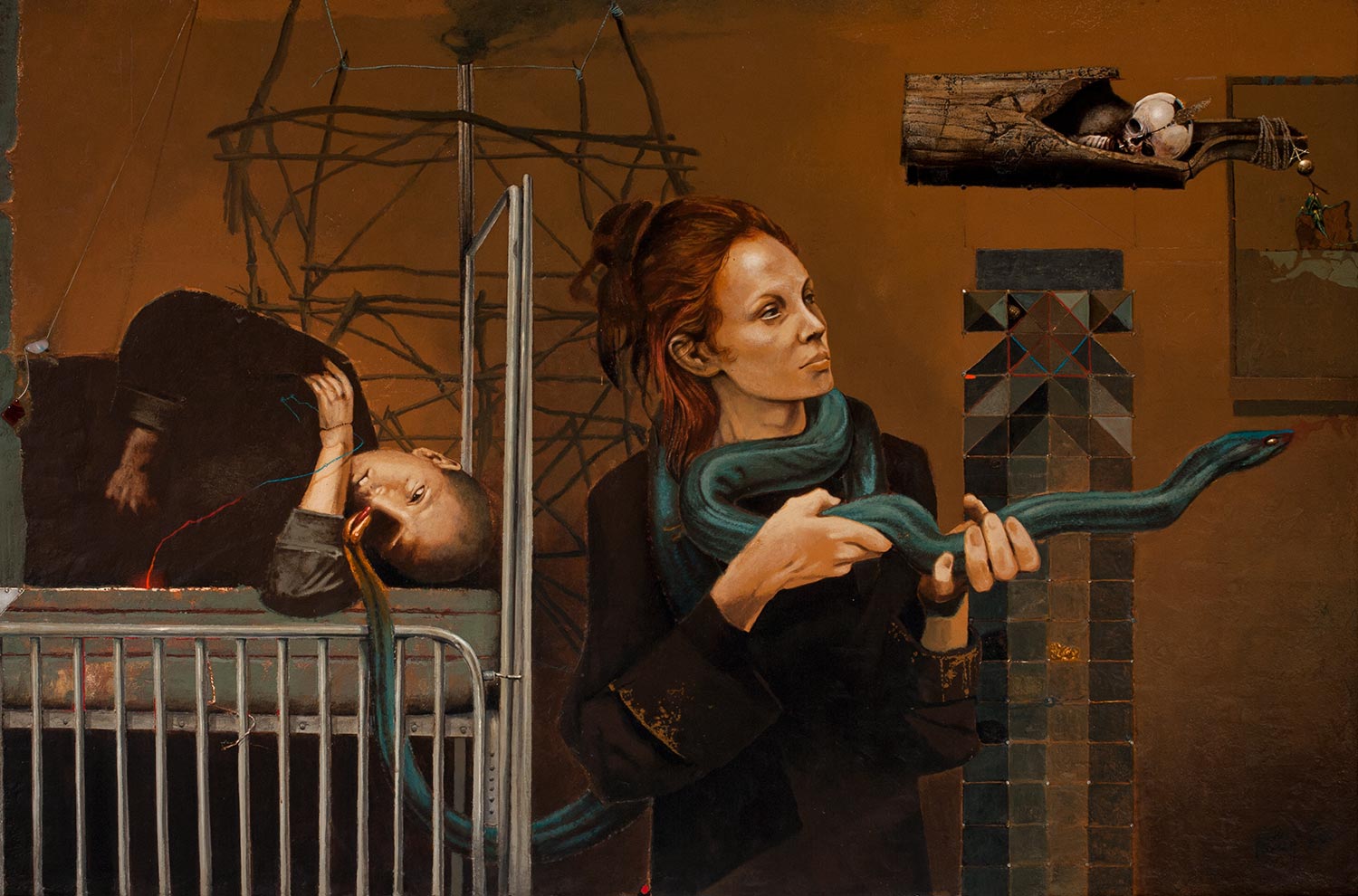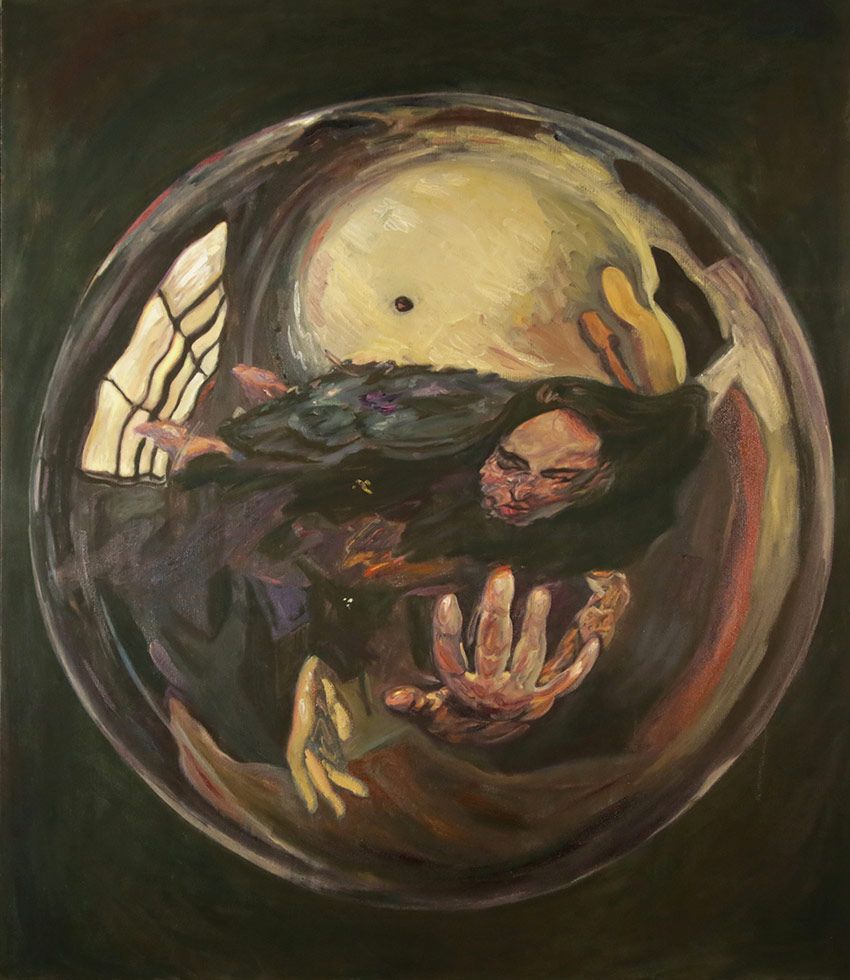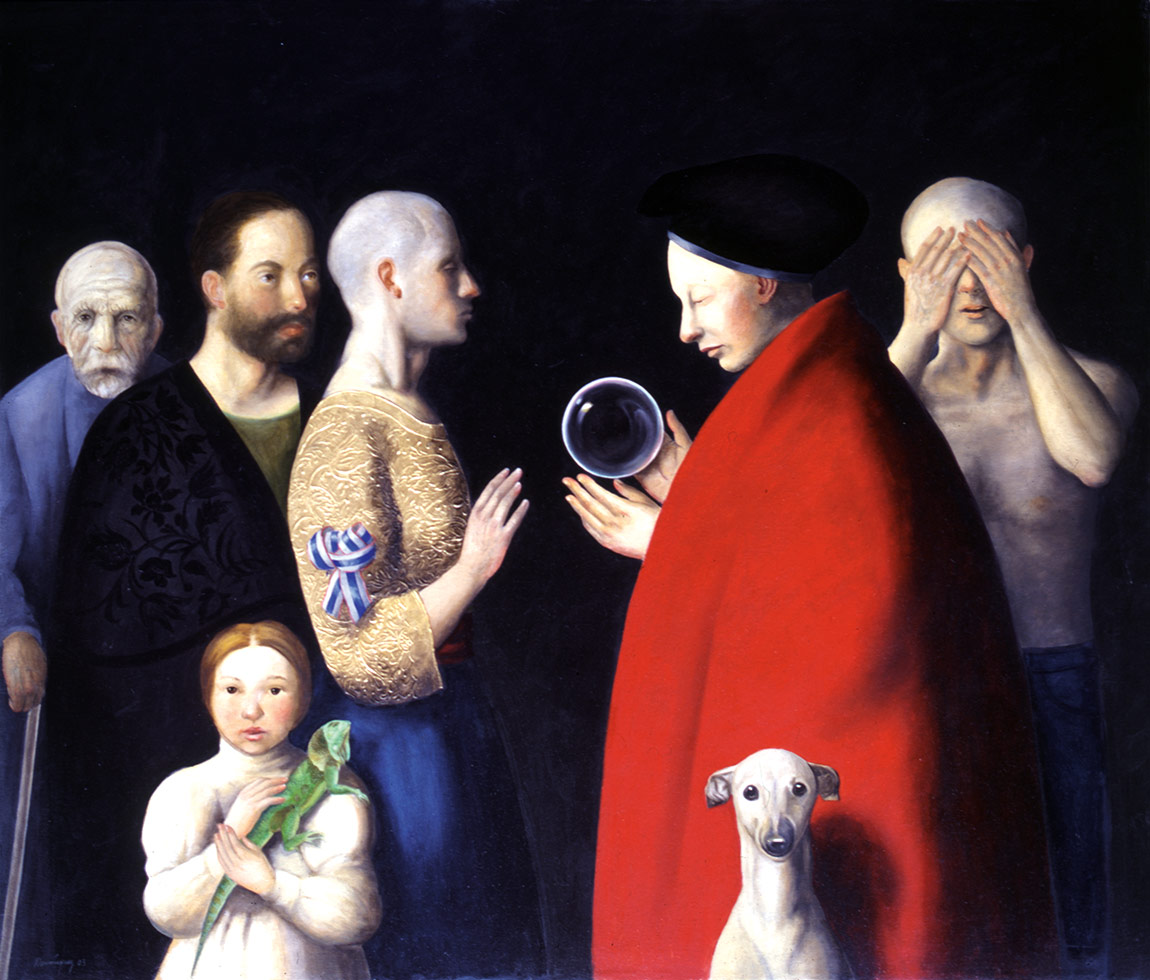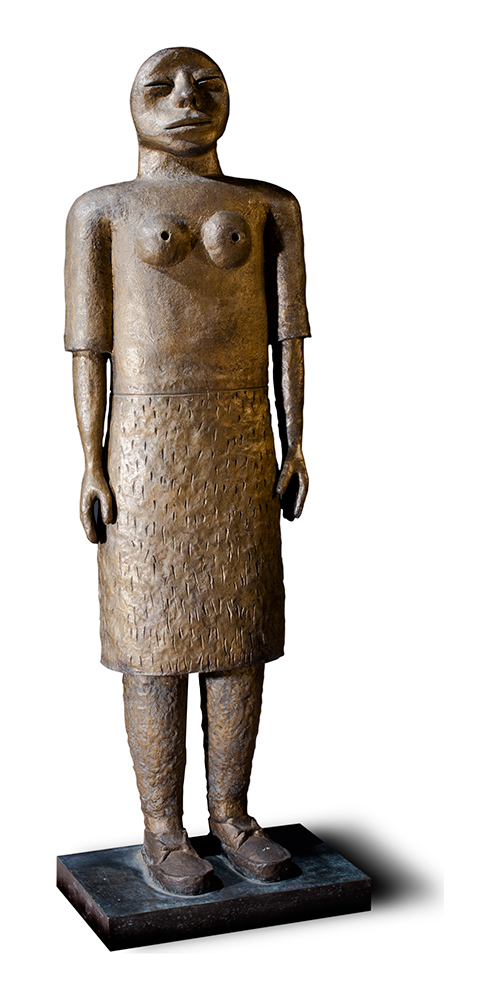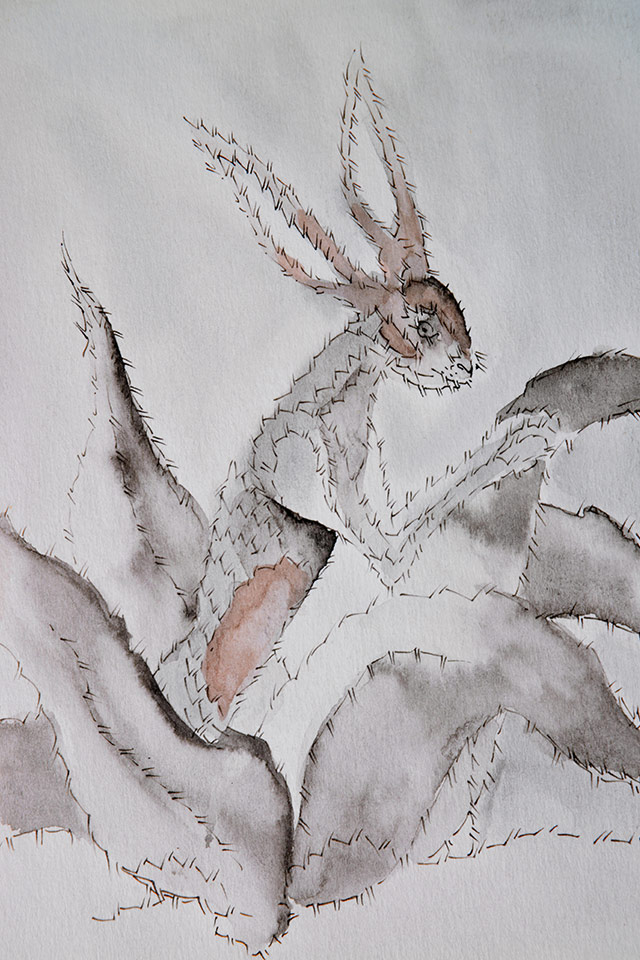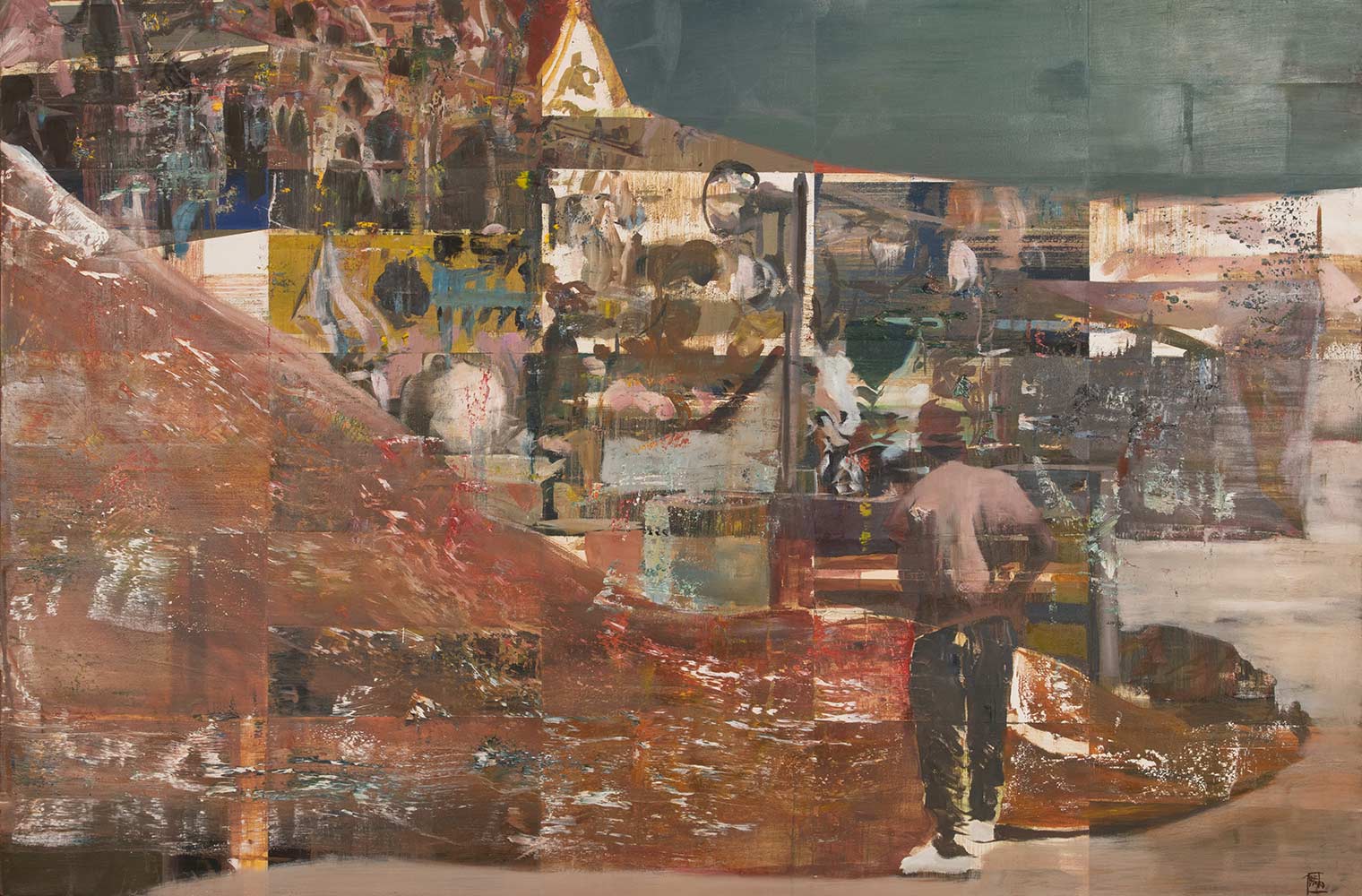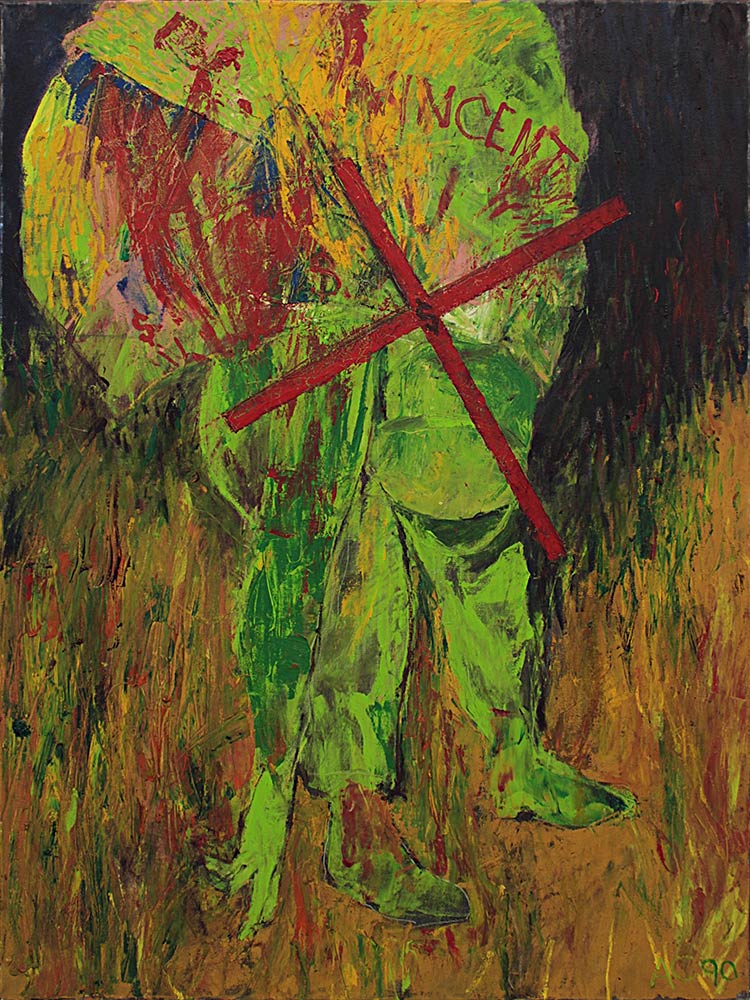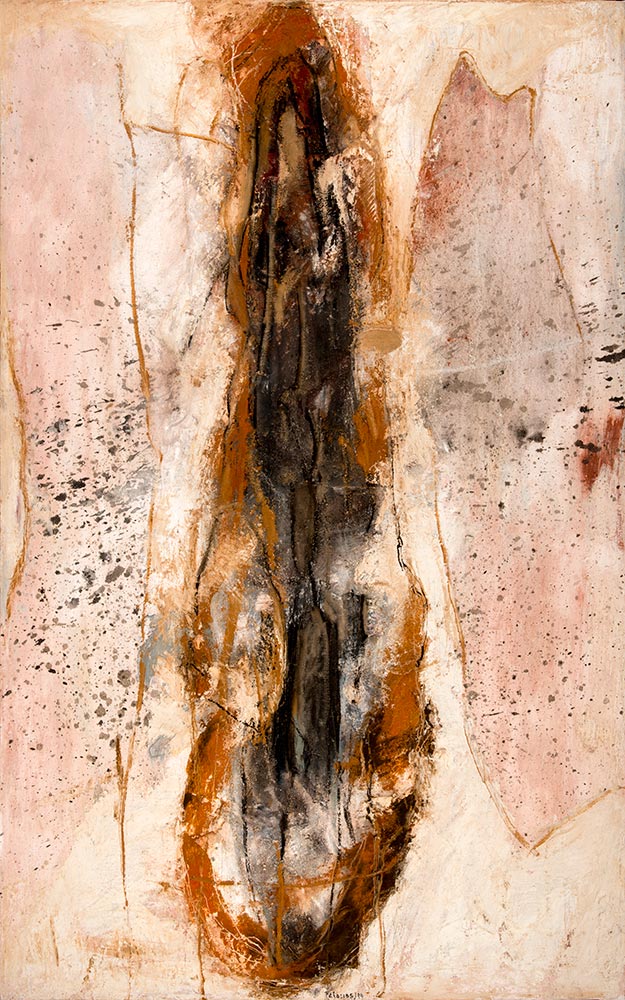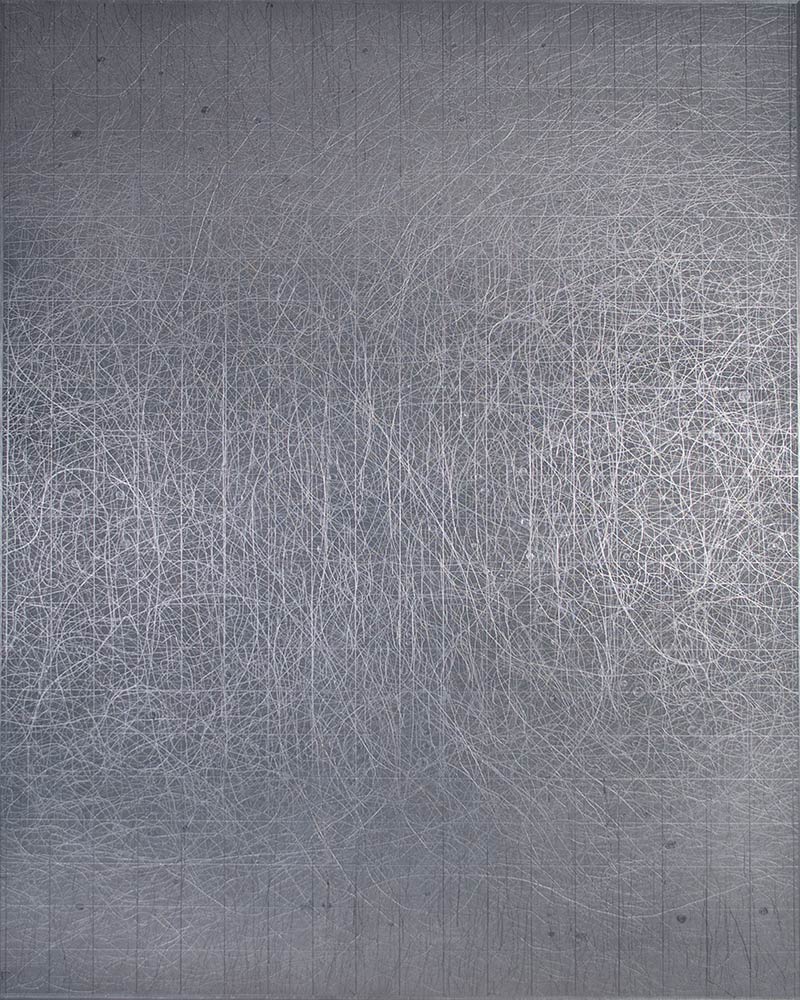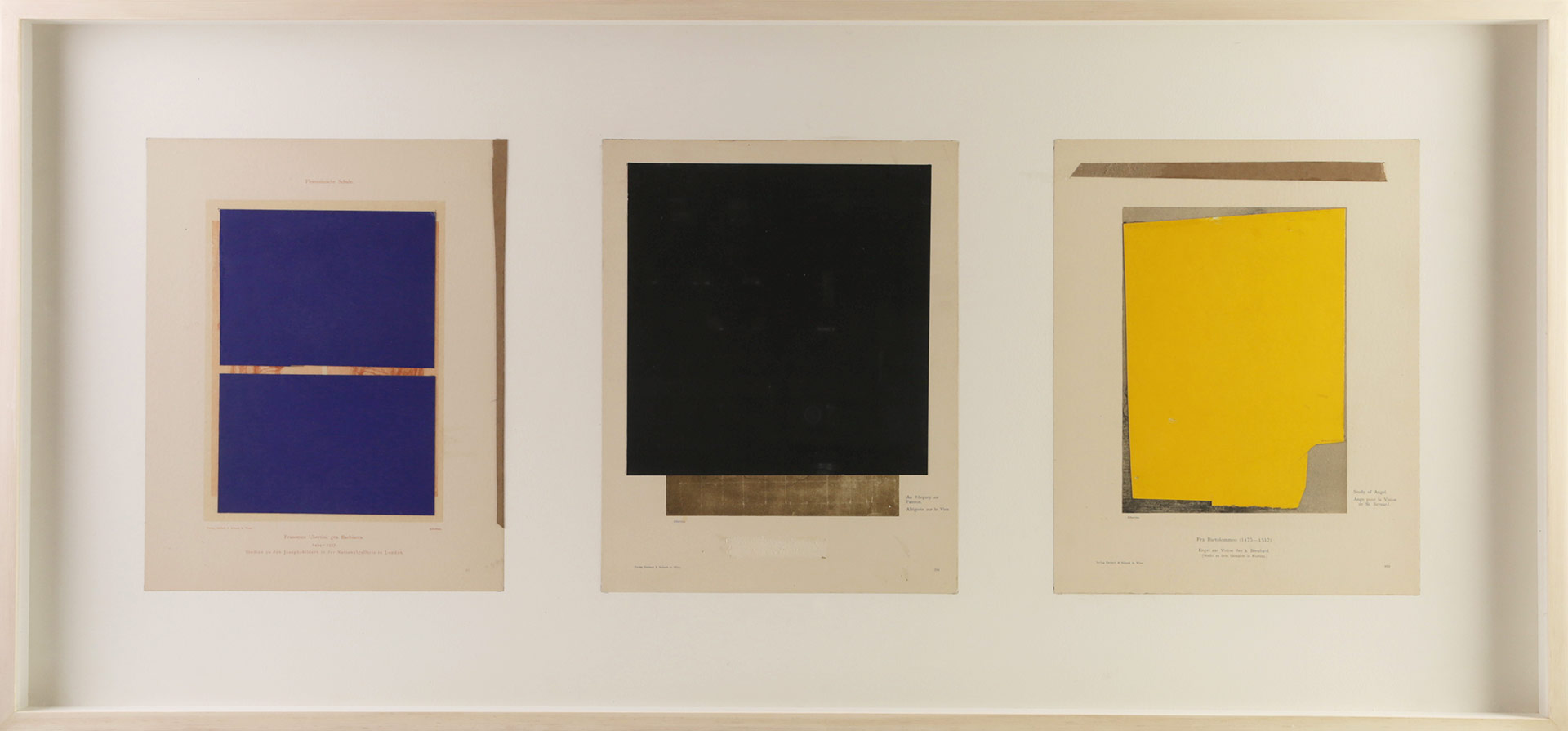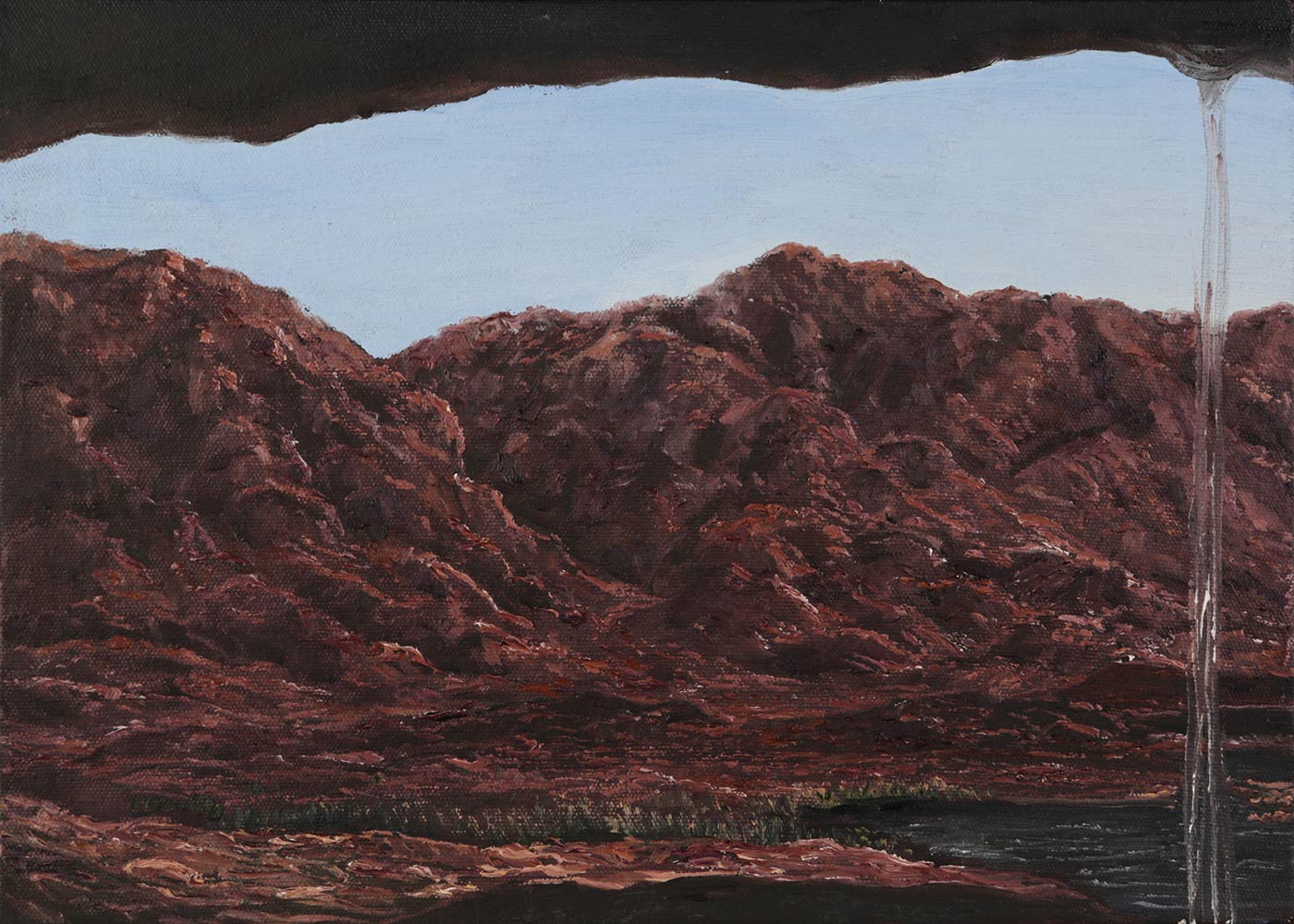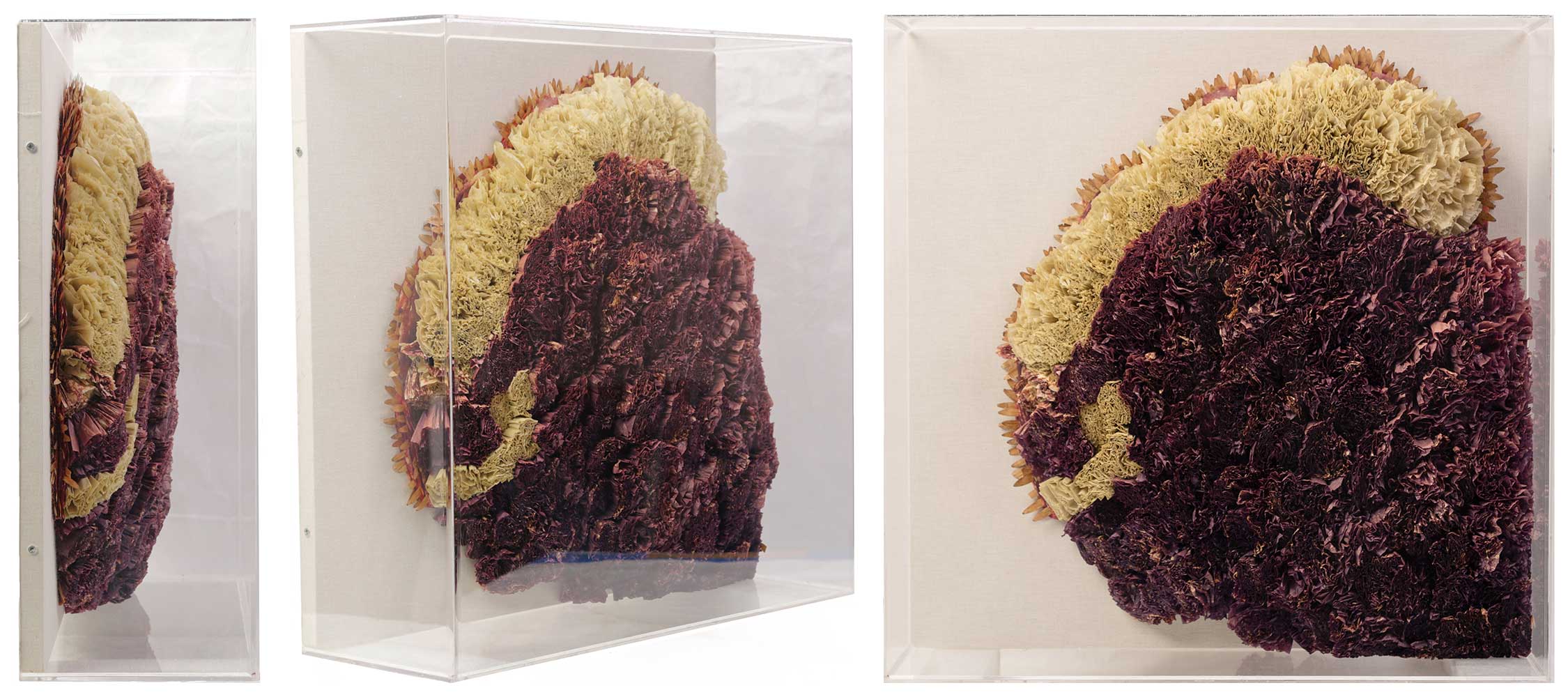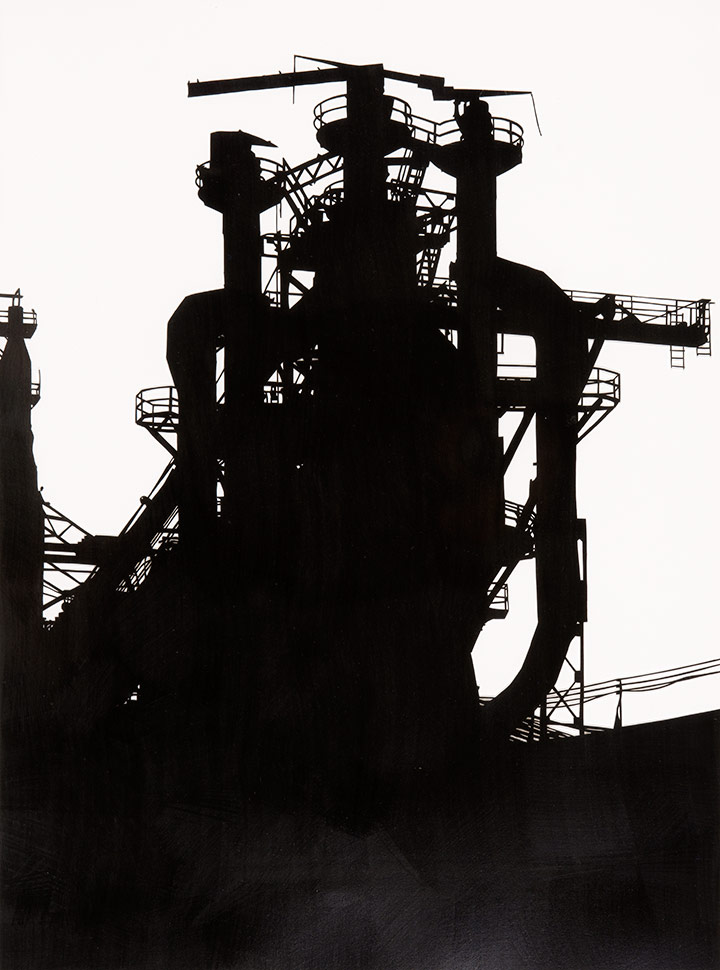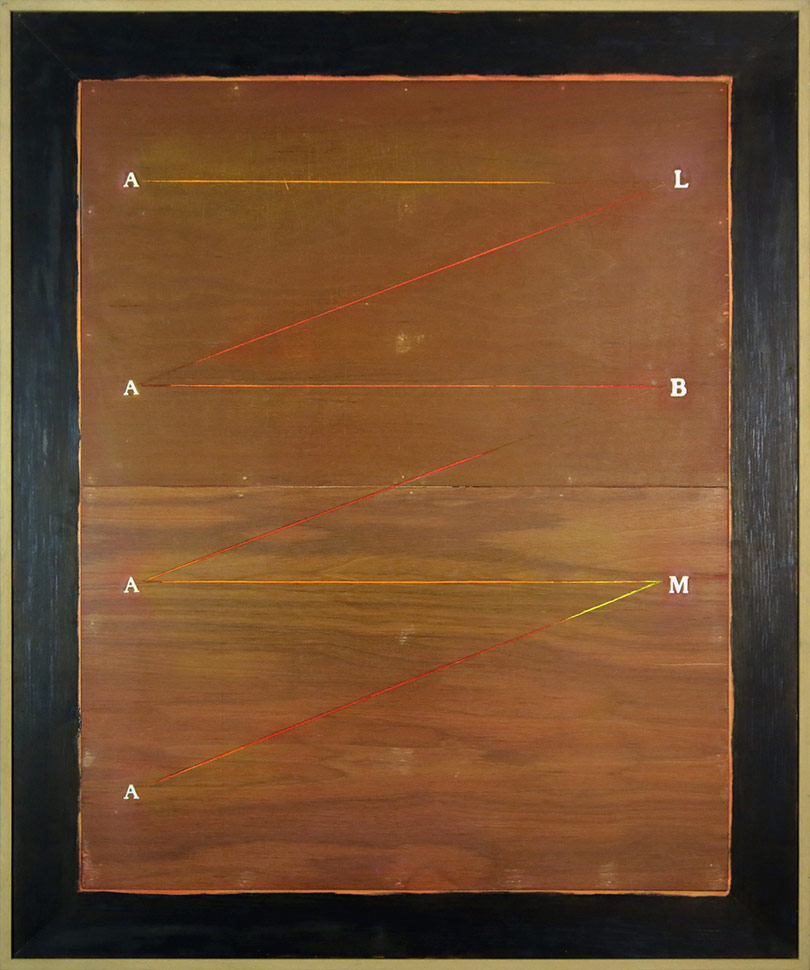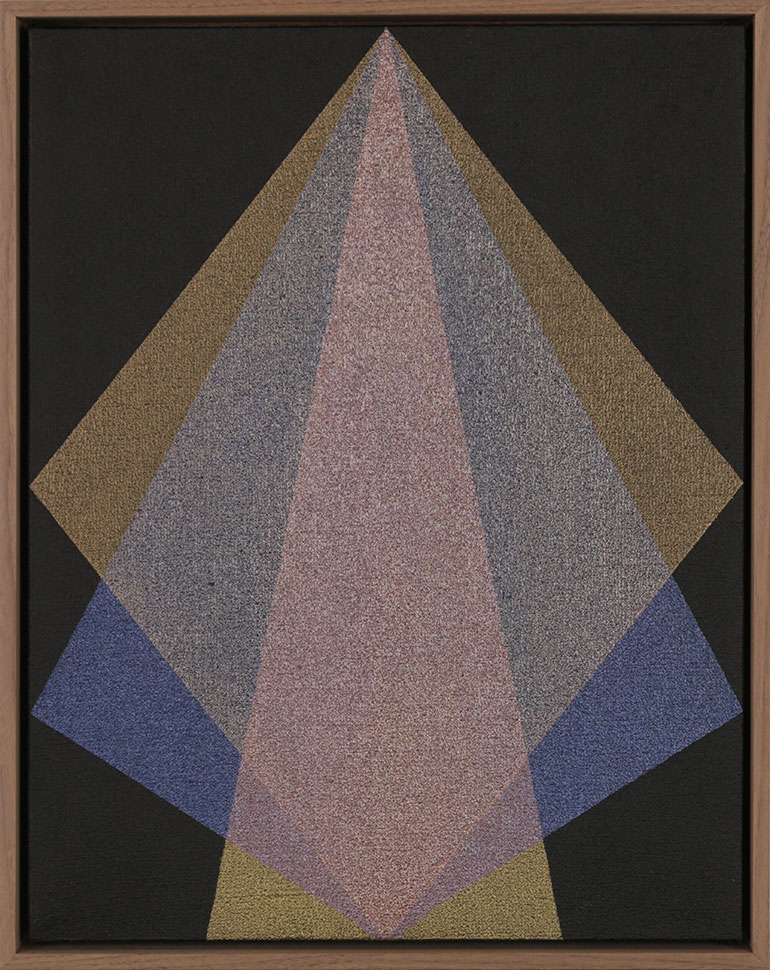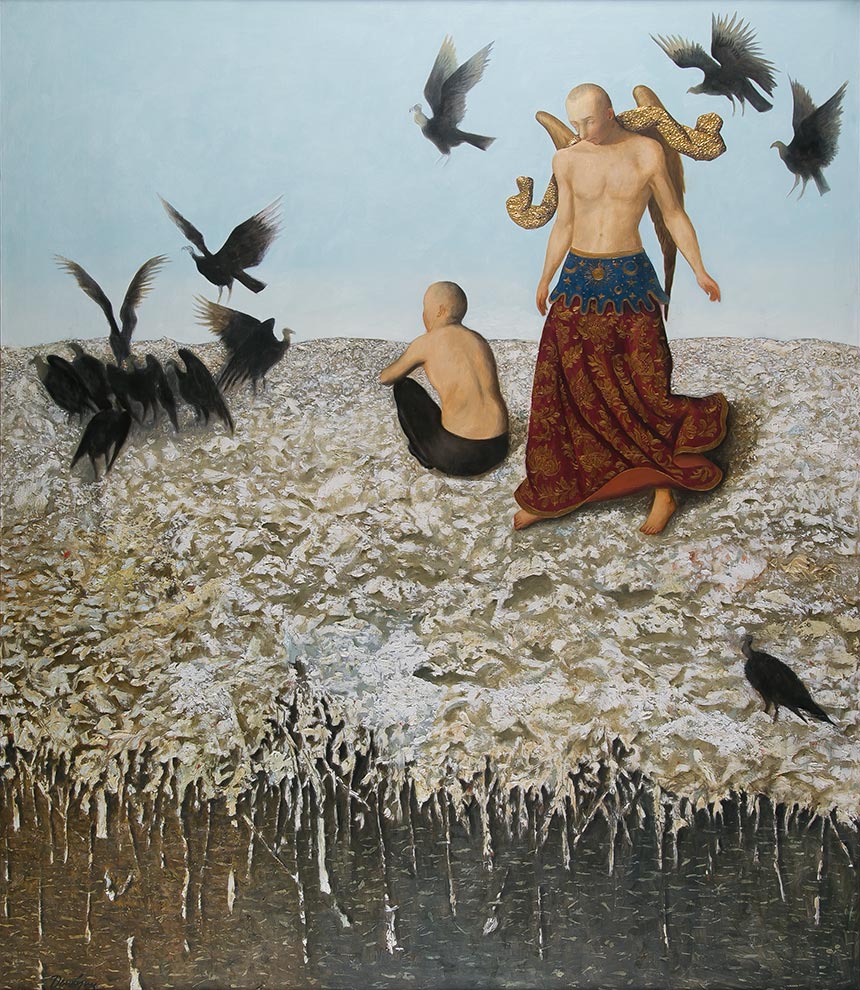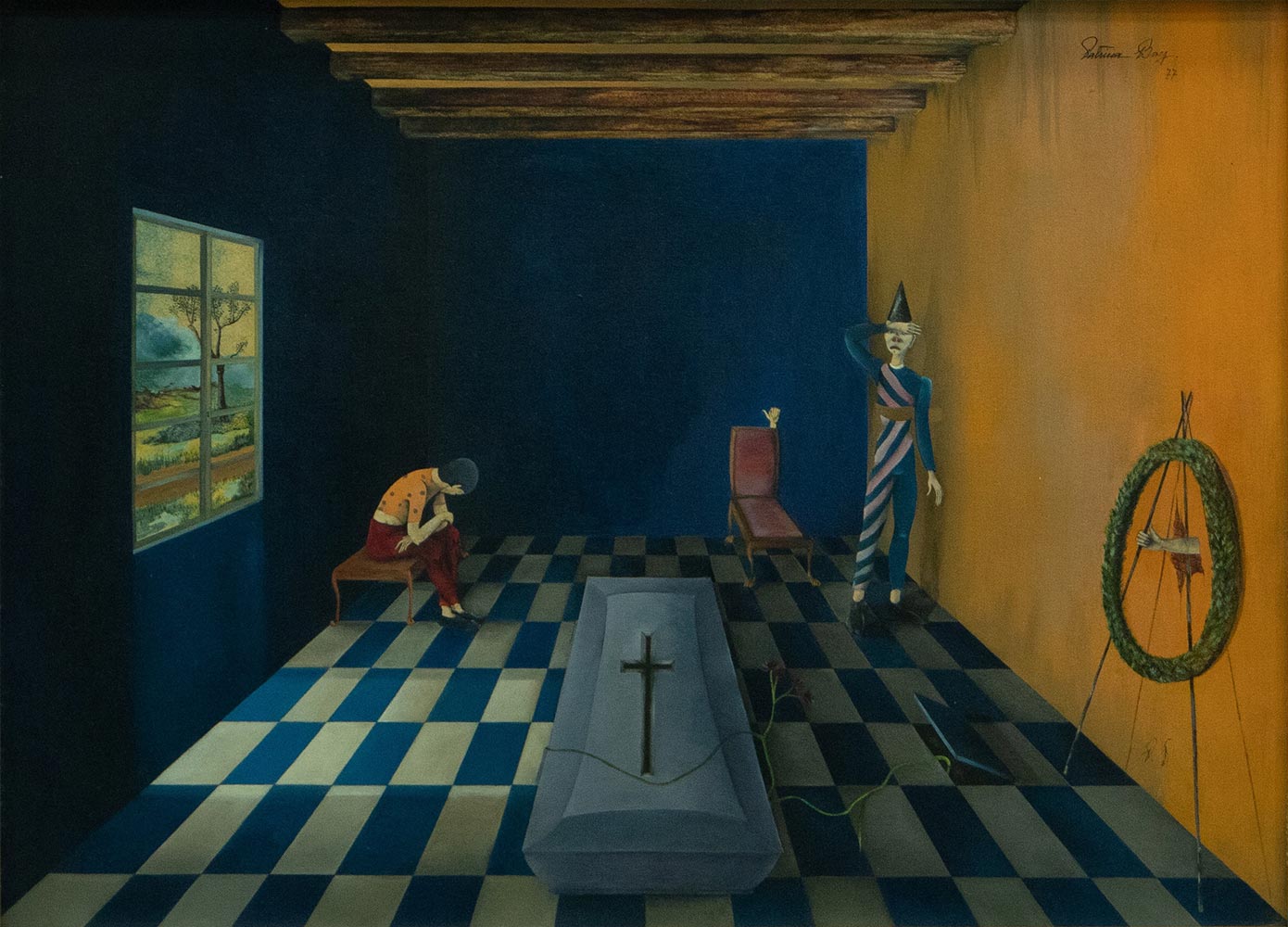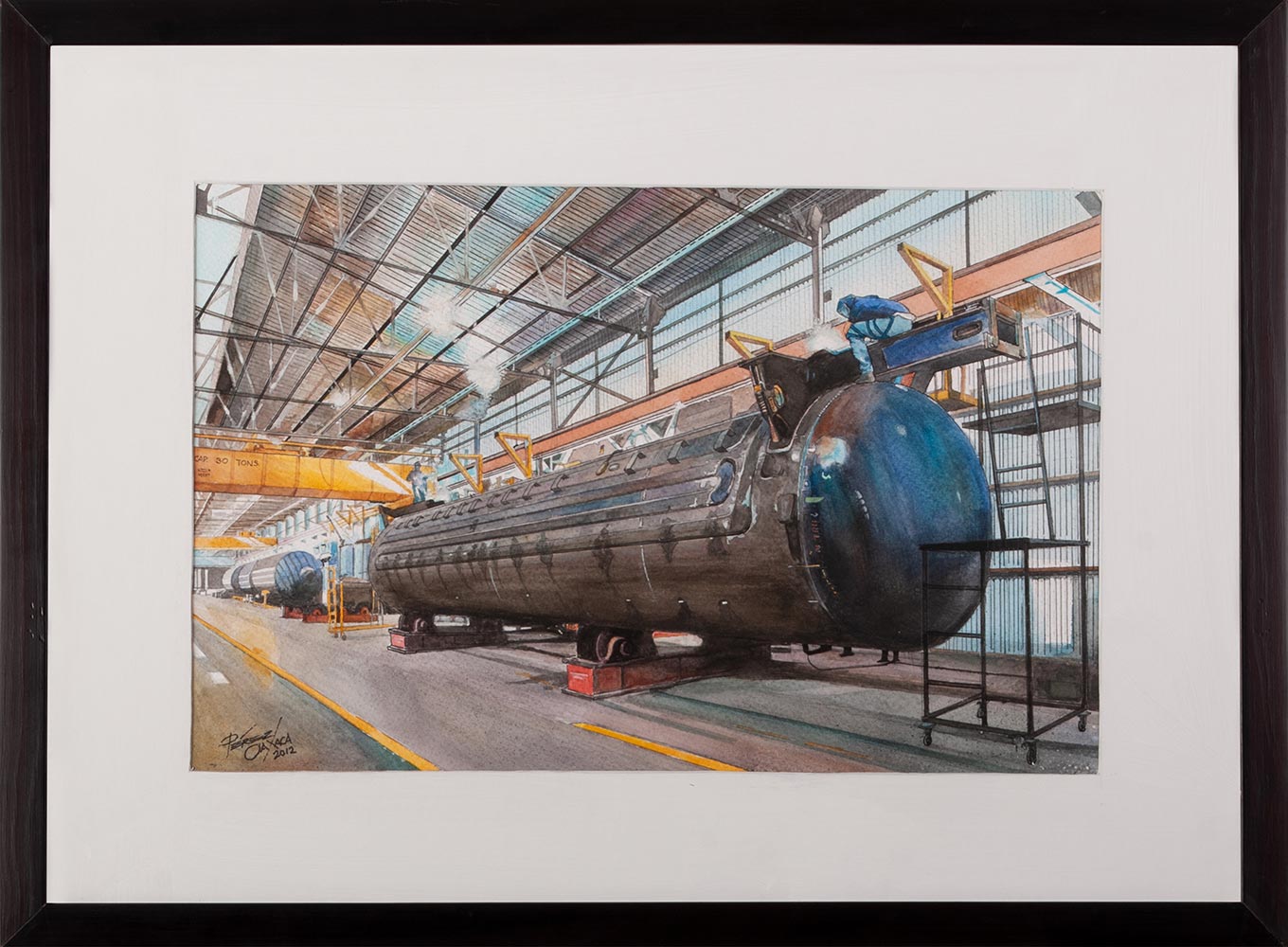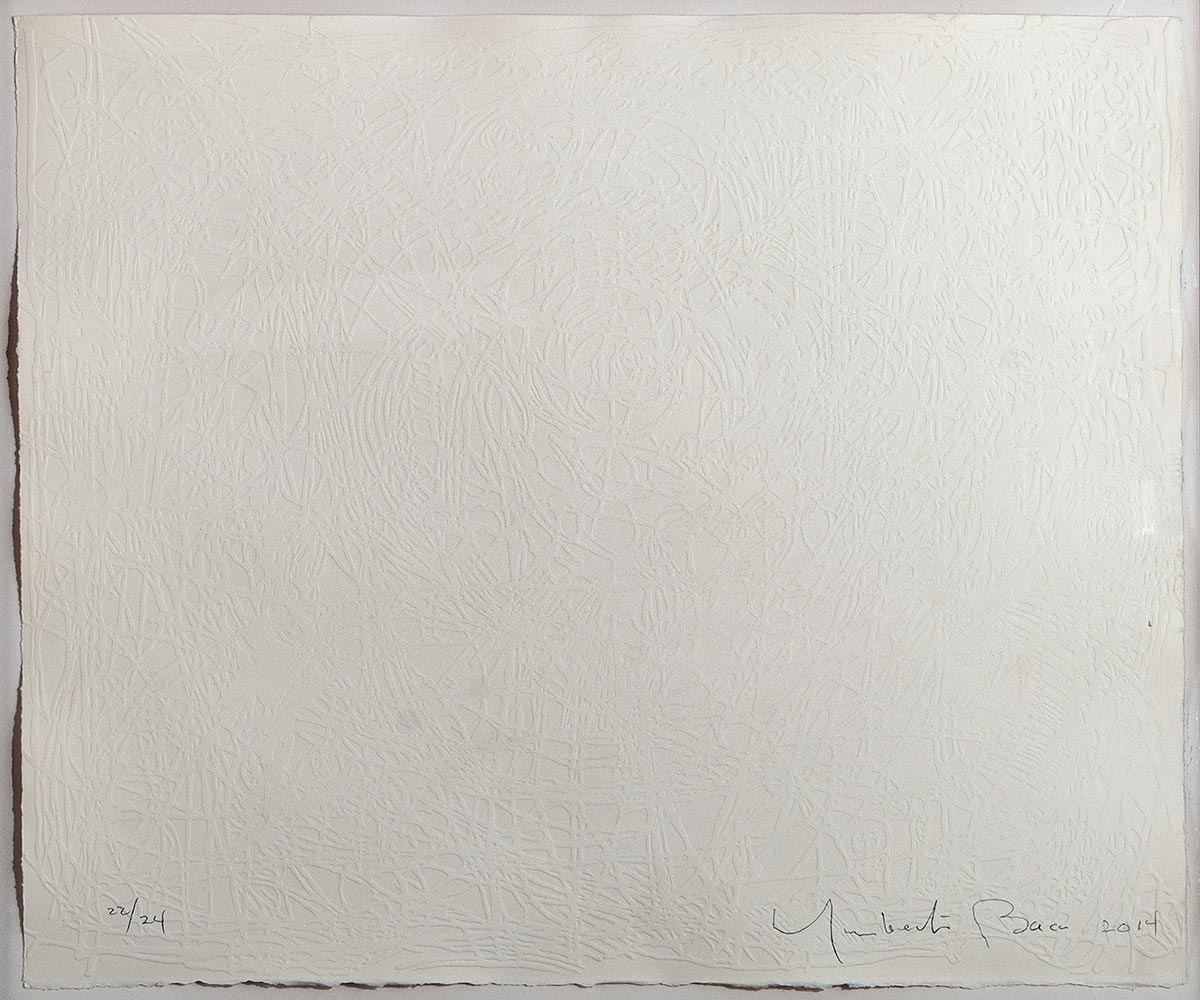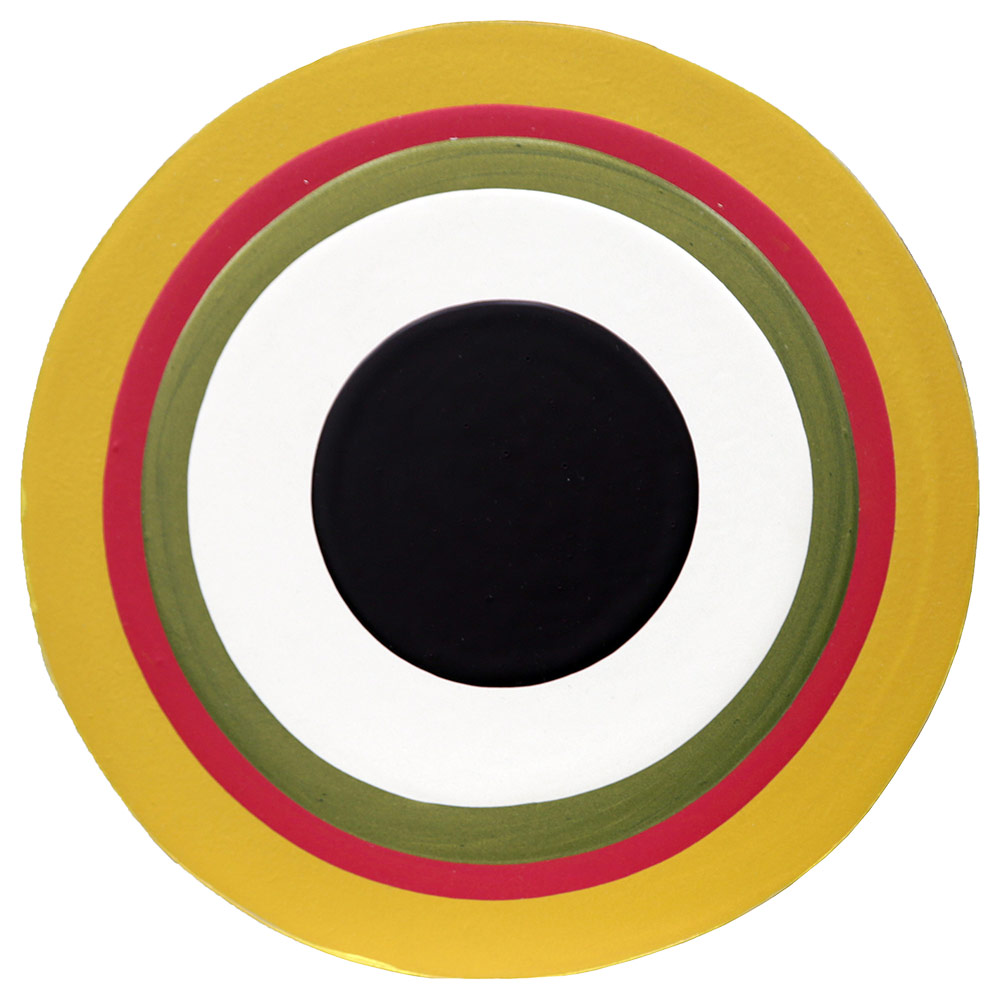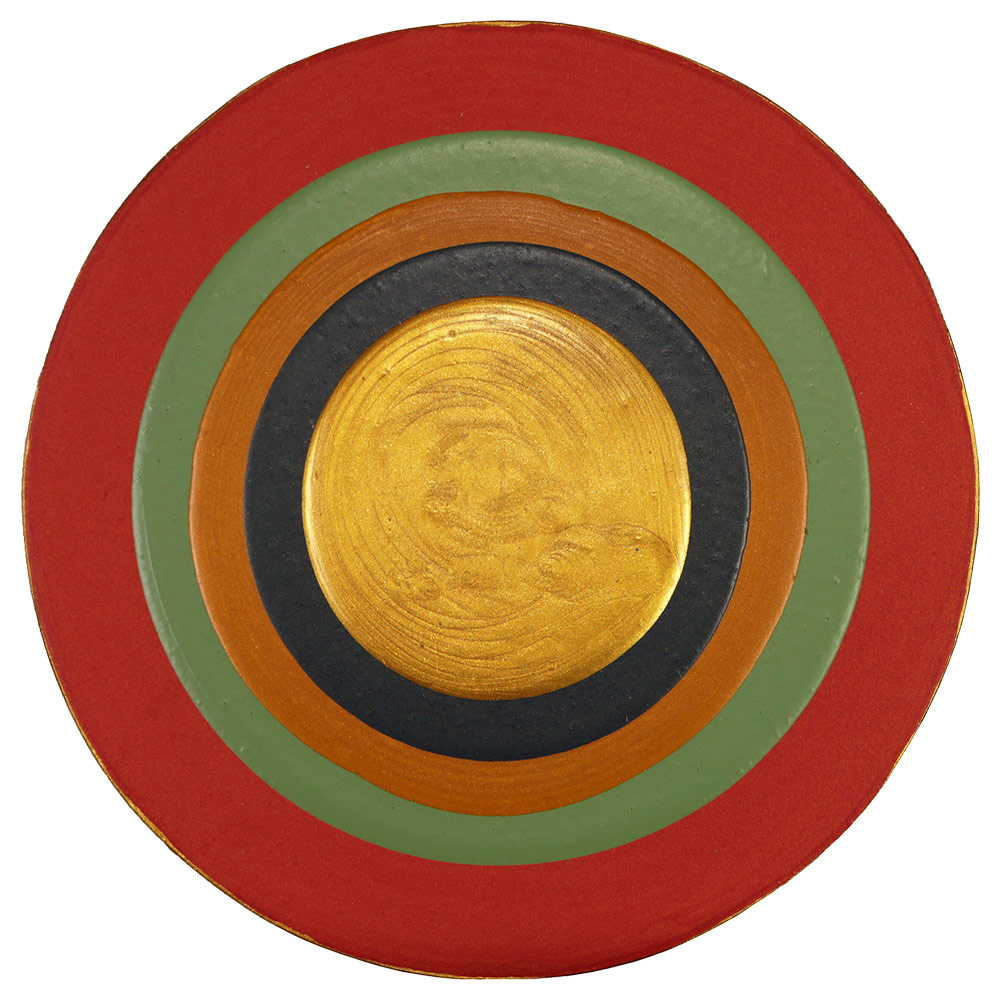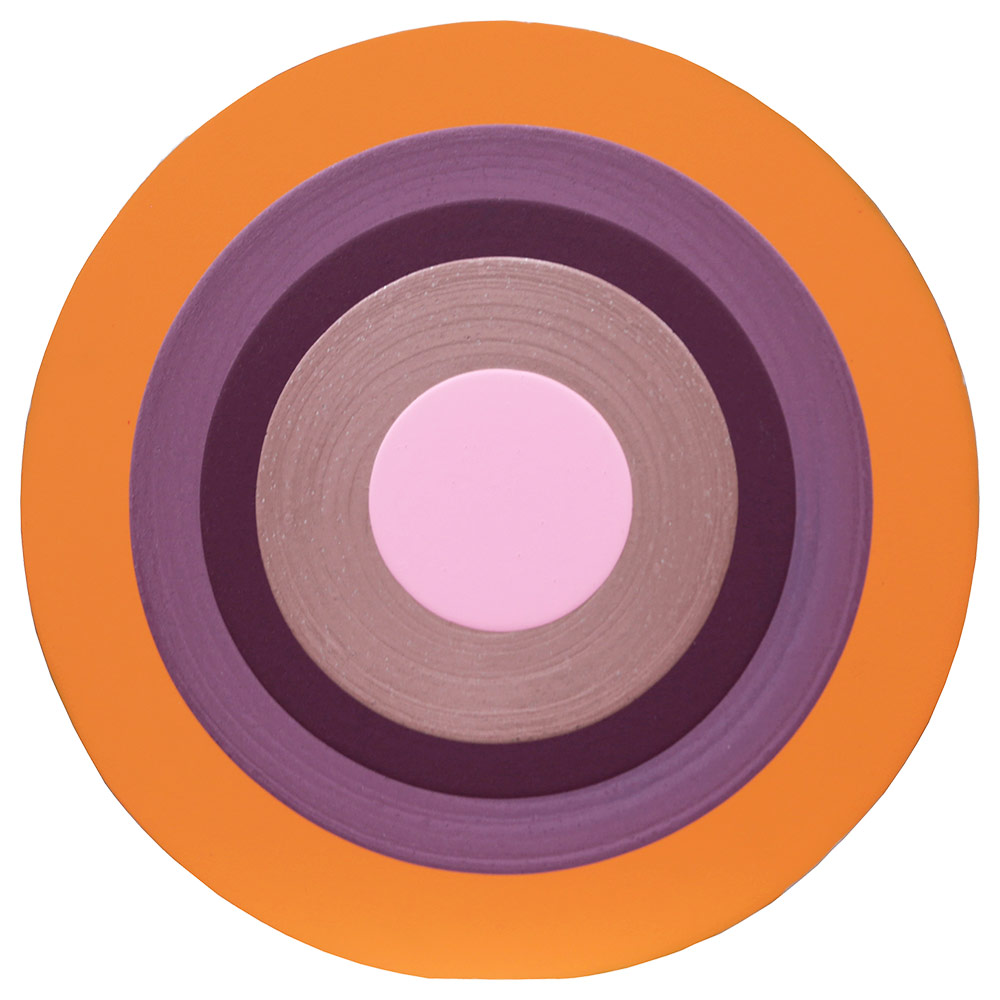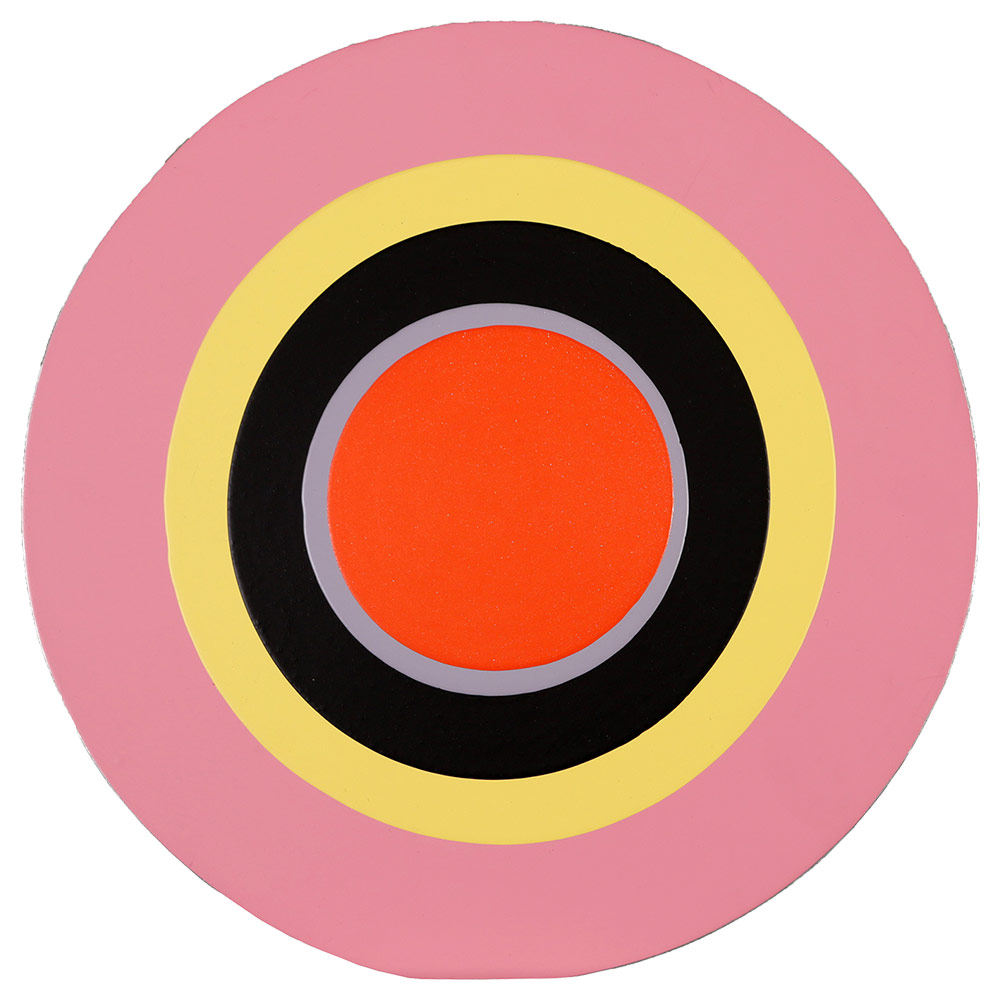PRESENTACIÓNINTRODUCTION
La muestra Pluralidad es un panorama de la vasta producción artística que integran las Colecciones Pago en Especie y Acervo Patrimonial de la Secretaría de Hacienda y Crédito Público. Esta exposición es una lectura de las corrientes y manifestaciones artísticas más relevantes de México, que definieron el devenir y democratización de las escenas culturales en nuestro país a partir de los años 50 del siglo XX.
Dividida en seis núcleos temáticos, Pluralidad recorre desde la pintura de caballete y de paisaje, herederas de La Escuela Mexicana de Pintura; la influencia surrealista; la abstracción geométrica y gestual; la figuración pictórica, hasta escultura contemporánea (2) de gran formato. Incluyendo un apartado dedicado a la creación actual de artistas chihuahuenses.
La segunda mitad del siglo XX estuvo marcada por significativos movimientos civiles y culturales, reacciones a la Segunda Guerra Mundial y la amenaza nuclear, empujando un replanteamiento de la idea de sociedad, del propio nacionalismo y las grandes ideologías. México, a partir de los años 50, también entra a una era de efervescencia tecnológica, política y cultural, que potenció el desarrollo de diversas posturas, en ocasiones disímbolas, aunque entrelazadas por la temporalidad.
En el ámbito artístico, por ejemplo, La Escuela Mexicana de Pintura defendía desde el caballete gran parte de los postulados nacionalistas del Movimiento Muralista. Al mismo tiempo, la influencia de las vanguardias europeas y artistas europeos establecidos en nuestro país, incentivó a jóvenes mexicanos de clase media y alta a viajar, explorar e importar nuevos intereses y estilos.
El movimiento artístico europeo con mayor acogida fue el Surrealismo, el cual se insertó profundamente en la escena artística nacional a través de la literatura, las artes escénicas, el cine y la pintura. También encontraremos que prevaleció su fuerte influencia en la pintura figurativa e hiperrealista de las décadas de los ochenta y los noventa.
Por otro lado, la Ruptura fue un movimiento sin manifiestos, los artistas que pueden asociarse con esta corriente tenían en común una clara búsqueda de la libertad creativa, sin filiaciones a la ideología nacional o a la propia figuración, cambiando así la percepción del arte en México.
Hoy, adentrados en el siglo XXI, la producción artística contemporánea revela cómo dichos cruces y divergencias enriquecieron lenguajes, contextos, conexiones conceptuales y matéricas. Abriendo múltiples campos de investigación y experimentación en el arte mexicano con proyección global.
El Programa Pago en Especie, fundado en 1957 y formalizado por decreto presidencial en 1975, ha promovido y fomentado la pluralidad de voces desde entonces. Es referente internacional en la formación de acervos públicos y vanguardia tributaria, hoy en día conforma una de las más importantes colecciones de arte moderno y contemporáneo en México. Es un orgullo para la SHCP presentar en Casa Chihuahua, parte de la riqueza patrimonial, herencia de todos los mexicanos.
The Plurality exhibition is an overview of the vast artistic production that makes up the Payment in Kind and Heritage Collections of the Ministry of Finance and Public Credit. This exhibition is a reading of the most relevant artistic trends and manifestations in Mexico, which defined the future and democratization of cultural scenes in our country from the 1950s onwards.
Divided into six thematic cores, Pluralidad ranges from easel and landscape painting, heirs of the Mexican School of Painting; the surrealist influence; geometric and gestural abstraction; pictorial figuration, to large-format contemporary sculpture. Including a section dedicated to the current creation of Chihuahuan artists.
The second half of the 20th century was marked by significant civil and cultural movements, reactions to the Second World War and the nuclear threat, pushing for a rethinking of the idea of society, of nationalism itself and the great ideologies. Mexico, starting in the 1950s, also entered an era of technological, political and cultural effervescence, which promoted the development of various positions, sometimes dissimilar, although intertwined by temporality.
In the artistic field, for example, the Mexican School of Painting defended many of the nationalist postulates of the Muralist Movement from the easel. At the same time, the influence of the European avant-garde and European artists established in our country encouraged young Mexicans from the middle and upper class to travel, explore and import new interests and styles.
The most popular European art movement was Surrealism, which was deeply inserted into the national art scene through literature, performing arts, film and painting. We will also find that his strong influence prevailed in the figurative and hyperrealist painting of the eighties and nineties.
On the other hand, the Ruptura (rupture) was a movement without manifestos, the artists who can be associated with this current had in common a clear search for creative freedom, without affiliations to the national ideology or to the figuration itself, thus changing the perception of art in Mexico.
Today, entering the 21st century, contemporary artistic production reveals how these intersections and divergences enriched languages, contexts, conceptual and material connections. Opening multiple fields of research and experimentation in Mexican art with global projection.
The Payment in Kind Program, founded in 1957 and formalized by presidential decree in 1975, has promoted and encouraged plurality of voices since then. It is an international reference in the formation of public collections and tax avant-garde, today it makes up one of the most important collections of modern and contemporary art in Mexico. It is a pride for the SHCP to present in Casa Chihuahua, part of the heritage wealth, heritage of all Mexicans.
MÉXICO EN SUS COLORESMEXICO IN ITS COLORS
La búsqueda por la “esencia de la nacionalidad” y la influencia de las ideas marxistas-socialistas, marcaron profundamente la producción artística mexicana durante la época posrevolucionaria. El Movimiento Muralista y La Escuela Mexicana de Pintura unificaron estética e ideológicamente las formas de representación de los valores patrios y la nueva visión de la historia de México.
En este núcleo encontramos obra paisajística y de caballete, de relevantes artistas que continuaron la pauta de un arte comprometido, de contenido social, herencia de la Escuela Mexicana de Pintura, como Raúl Anguiano, Rina Lazo, Jesús Chávez Morado y Arturo García Bustos. Así como escultura de Juan Olaguibel, Francisco Castro Pacheco y Francisco Zúñiga, que muestran el cambio de paradigma representacional de la mexicanidad.
Las obras contemporáneas de Luis Nishizawa, Hermenegildo Sosa, Armando Ahuatzi, José Sámano, Álvaro Mendoza y Humberto Carrasco, mantienen el género del paisaje vigente hasta nuestros días. Junto con el trabajo de Rolando Arjona y Jorge Obregón se aprecia cómo la riqueza natural y cultural del país sigue entusiasmando a artistas. Las representaciones de la territorialidad se van transformando junto con la sociedad que la contempla.
The quest for the “essence of nationality” and the influence of Marxist-socialist ideas deeply marked Mexican artistic production during the post-revolutionary era. The Muralist Movement and the Mexican School of Painting aesthetically and ideologically unified the forms of representation of national values and the new vision of the history of Mexico.
In this nucleus we find landscape and easel work, by relevant artists who continued the pattern of a committed art, with social content, heritage of the Mexican School of Painting, such as Raúl Anguiano, Rina Lazo, Jesús Chávez Morado and Arturo García Bustos. As well as sculpture by Juan Olaguibel, Francisco Castro Pacheco and Francisco Zúñiga, which show the change in the representational paradigm of Mexicanness.
The contemporary works of Luis Nishizawa, Hermenegildo Sosa, Armando Ahuatzi, José Sámano, Álvaro Mendoza and Humberto Carrasco, maintain the landscape genre in force to this day. Together with the work of Rolando Arjona and Jorge Obregón, we can see how the natural and cultural wealth of the country continues to excite artists. The representations of territoriality are transformed along with the society that contemplates it.

Iztaccihuatl dese el volcán Ahuazatepetl
2007
Óleo sobre lino
60×140cm Iztaccihuatl from Ahuazatepetl Volcano
2007
Oil on linen
48×25.5×18cm

Paisaje del Valle
2003
Tinta sobre tela
77×167cm Landscape of the Valley
2003
Ink on canvas
77×167×18cm
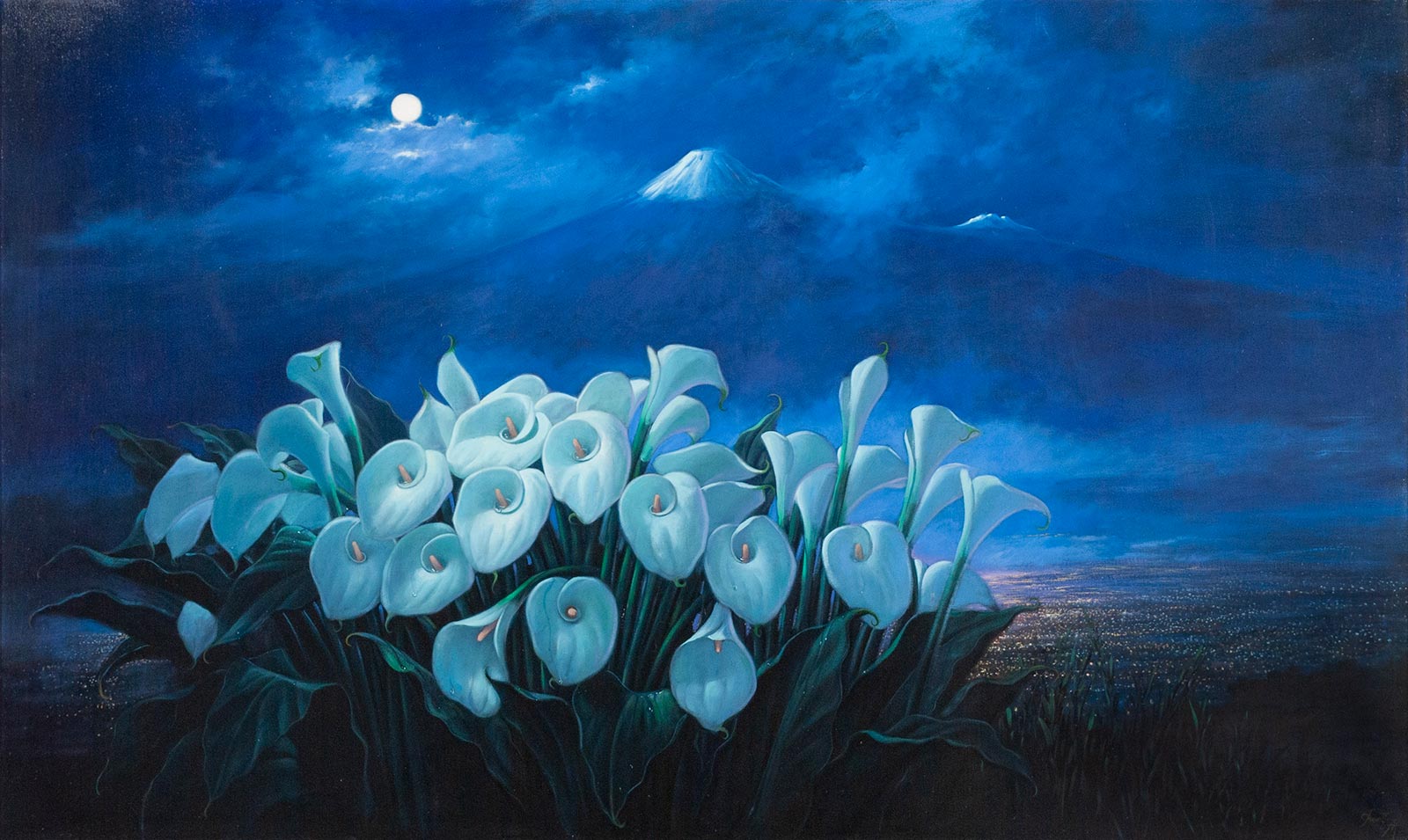
Nocturno de alcatraces en Puebla
2010
Óleo sobre tela
120×200cm Nocturne of Lillies in Puebla
2010
Oil on canvas
77×120×200cm
FORMAS RUPTURISTASDISRUPTIVE FORMS
Durante los años cuarenta e inicios de los cincuenta, el panorama del arte mexicano seguía bajo la actitud nacionalista que no permitía fácilmente la apertura a otras corrientes, sobre todo extranjeras o vanguardistas. Las y los artistas jóvenes de aquellos años, buscaban renovar los lenguajes plásticos, ganar espacios de expresión y desechar discursos obsoletos vinculados al muralismo. Esto generó la unión de un muy diverso grupo llamado Movimiento de Ruptura, integrado por artistas que iniciaron sus carreras en la década de los cincuenta y que marcaron un antes y un después en la historia del arte mexicano.
Las obras aquí presentes de los artistas Beatriz Zamora, Mathias Goeritz, Roger von Gunten, Juan Soriano, Pedro Coronel, José Luis Cuevas, Gabriel Macotela, Francisco Corzas y Arnold Belkin, revelan como el distanciamiento del nacionalismo muralista dio pie a explorar nuevos lenguajes plásticos y temas de carácter introspectivo. Dando un importante impulso al arte abstracto, tanto en sus vertientes geométricas como en la lírica.
During the 1940s and early 1950s, the Mexican art scene continued to have a nationalist attitude that did not easily allow for openness to other currents, especially foreign or avant-garde ones. The young artists of those years sought to renew visual languages, gain spaces for expression and discard obsolete discourses linked to muralism. This generated the union of a very diverse group called the Rupture Movement, made up of artists who began their careers in the 1950s and who marked a before and after in the history of Mexican art.
The works presented here by the artists Beatriz Zamora, Mathias Goeritz, Roger von Gunten, Juan Soriano, Pedro Coronel, José Luis Cuevas, Gabriel Macotela, Francisco Corzas and Arnold Belkin, reveal how the distancing from muralist nationalism gave rise to exploring new plastic languages and themes of an introspective nature. Giving an important boost to abstract art, both in its geometric and lyrical aspects.
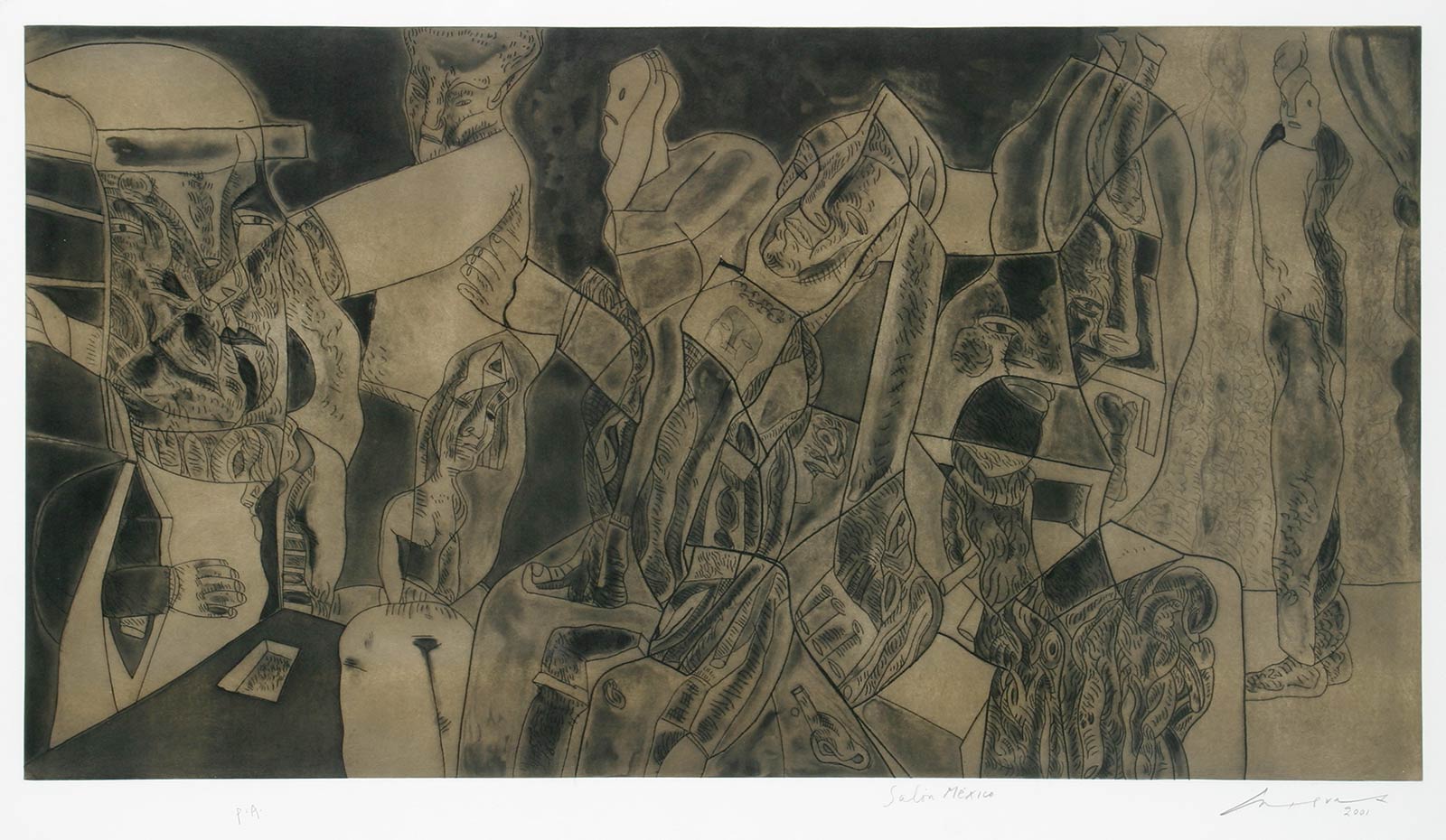
Salón México
2001
Aguafuerte y aguatinta sobre papel
104 × 148 cm José Luis Cuevas
Mexico Dance Hall
2001
Etching and aquatint on paper
104 × 148 cm
ESENCIA ONÍRICAONEIRIC ESSENCE
Un buen ejemplo de influencia creativa se desarrolló en la década de los cuarenta con la llegada a México de André Breton y el surrealismo, acoplando esta corriente europea a una tradición artística que marcó una vertiente formal en la plástica mexicana hasta nuestros días.
Tanto el surrealismo como la pintura metafísica que lo anticipa, exploran el potencial creativo del inconsciente como fuerza creativa, para manifestar a través del arte otras realidades trascendentales y aspectos más profundos de la psique humana. Importantes representantes de este movimiento produjeron su obra en México, entre ellos Remedios Varo y Leonora Carrington. Artistas como Benjamín Domínguez, Fernando Garrido, Rodolfo Morales, Fernando Pereznieto, Heriberto Quesnel, Alejandro Colunga y Mario Martín del Campo comparten una marcada influencia mágica y onírica.
A good example of creative influence developed in the 1940s with the arrival in Mexico of André Breton and surrealism, coupling this European current with an artistic tradition that marked a formal aspect in Mexican art to this day.
Both surrealism and the metaphysical painting that anticipates it, explore the creative potential of the unconscious as a creative force, to manifest through art other transcendental realities and deeper aspects of the human psyche. Important representatives of this movement produced their work in Mexico, among them Remedios Varo and Leonora Carrington. Artists such as Benjamín Domínguez, Fernando Garrido, Rodolfo Morales, Fernando Pereznieto, Heriberto Quesnel, Alejandro Colunga and Mario Martín del Campo share a marked magical and oneiric influence.
REALISMOS Y FIGURACIONESREALISMS AND FIGURATIONS
Los realismos en el arte son el resultado de procesos de rigurosa observación y reflexión del mundo existente, mediante la representación figurativa de elementos.
La pintura figurativa, captura imágenes reconocibles para sugerir condiciones reales de la vida, idealizarlas o dotarlas de simbolismo, valiéndose de la distorsión, la exageración o la esquematización de las formas o figuras, sin que ellas pierdan su identidad reconocible; como se aprecia en estas obras de Francisco Toledo, Enrique Estrada y Carlos Vargas Pons.
La narrativa es un elemento importante en este tipo de pintura pues establece una dimensión temporal, un marco de acontecimientos que dan vida a la imagen estática.
En este núcleo, la escultura figurativa de Adolfo Riestra, Javier Marín y Roberto Cortázar, contrasta con la pintura de tratamiento realista de Rafael Coronel, Arturo Rivera y Benjamín Domínguez, evidenciando las múltiples posibilidades de significación y representativas de los lenguajes artísticos que se apoyan en la realidad sensible.
Realisms in art are the result of processes of rigorous observation and reflection of the existing world, through the figurative representation of elements.
Figurative painting captures recognizable images to suggest real conditions of life, idealize them or provide them with symbolism, using distortion, exaggeration or schematization of forms or figures, without them losing their recognizable identity; as seen in these works by Francisco Toledo, Enrique Estrada and Carlos Vargas Pons.
Narrative is an important element in this type of painting because it establishes a temporal dimension, a framework of events that give life to the static image.
In this thematic core, the figurative sculpture of Adolfo Riestra, Javier Marín and Roberto Cortázar, contrasts with the realistic treatment painting of Rafael Coronel, Arturo Rivera and Benjamín Domínguez, evidencing the multiple possibilities of meaning and representation of the artistic languages that rely on sensible reality.
GESTUALIDAD PICTÓRICAPICTORIAL GESTURES
Con la apertura a la abstracción artística, nace una nueva manera de hacer y apreciar la pintura, entendiéndola a través de su propia materialidad en relación con la expresión y corporalidad del artista. Podemos considerar la gestualidad pictórica como la modalidad más dinámica del lenguaje abstracto, donde la expresividad de manchas o energéticos trazos desplazan a la tradicional representación mimética de objetos, figuras y escenas reconocibles. Dando paso a nuevos mecanismos de significación y de comunicación sensorial.
La intervención del cuerpo es fundamental. Los característicos trazos gestuales, espontáneos y vigorosos, no implican solamente el movimiento de la mano con pincel, sino el activar de todo el cuerpo. Esto provocará en el arte una serie de reflexiones entorno la acción corporal de pintar, el artista ejecutante y la naturaleza de la pintura como material: escurre, salpica, se esparce, mancha…
De igual manera el lienzo de transforma; pasa de ser un simple soporte donde se concreta la representación o imagen de algo, para resignificarse como un espacio donde un acontecimiento sucede. Liberando a la pintura de valores estéticos y hasta morales de lo que debe ser, para revelarse como total posibilidad.
El Action painting, el Expresionismo Abstracto, el Tachismo y el Informalismo son algunas corrientes internacionales que favorecieron la aceptación de la gestualidad pictórica entre el público y la crítica especializada.
With the opening to artistic abstraction, a new way of making and appreciating painting is born, understanding it through its own materiality in relation to the expression and corporality of the artist. We can consider pictorial gestures as the most dynamic modality of abstract language, where the expressiveness of spots or energetic strokes displace the traditional mimetic representation of recognizable objects, figures and scenes. Giving way to new mechanisms of meaning and sensory communication.
The intervention of the body is essential. The characteristic gestural strokes, spontaneous and vigorous, do not only involve the movement of the hand with the brush, but also the activation of the entire body. This will provoke in art a series of reflections about the bodily action of painting, the performing artist and the nature of paint as a material: it drains, splashes, spreads, stains...
In the same way the canvas transforms; It goes from being a simple support where the representation or image of something is specified, to being redefined as a space where an event happens. Freeing painting from aesthetic and even moral values of what it should be, to reveal itself as a total possibility.
Action painting, Abstract Expressionism, Tachisme and Informalism are some international currents that favored the acceptance of pictorial gestures among the public and specialized critics.
MIRADAS CONTEMPORÁENASCONTEMPORARY LOOKS
Las transformaciones históricas del arte no pueden analizarse como una evolución lineal y unidireccional. Sin embargo, las vanguardias, las rupturas y cambios de paradigma representacional, han dejado un legado a las y los artistas de hoy, que libremente pueden tomar, retomar, resignificar e innovar desde una corriente, técnica o abriendo nuevos campos de creación artística. El arte va cambiando a la par de la sociedad que lo genera y consume. El arte contemporáneo en la actualidad, podemos comprenderlo como un cúmulo de interrelaciones de referencias culturales, teóricas y contextos sociales; aportando un inagotable universo de perspectivas para observar y reflexionar nuestro tiempo.
Los acervos bajo custodia de la SHCP son un claro reflejo de la pluralidad que actualmente caracteriza la creación artística de nuestro país, en el que los lenguajes artísticos y discursivos se han complejizado a nivel conceptual.
En este núcleo se presenta una selección de obras contemporáneas que manifiestan cómo la investigación teórica y los análisis formales son fundamento medular hasta en disciplinas como el dibujo, la pintura y la escultura. Para esta exposición con sede en Casa Chihuahua, se incluye una muestra de la producción artística contemporánea de artistas chihuahuenses presentes en las colecciones de SHCP.
The historical transformations of art cannot be analyzed as a linear and unidirectional evolution. However, the avant-garde, the ruptures and changes in the representational paradigm, have left a legacy for today's artists, who can freely take, take up, resignify and innovate from a trend, technique or opening new fields of artistic creation. Art changes along with the society that generates and consumes it. Contemporary art today can be understood as a cluster of interrelationships of cultural and theoretical references and social contexts; providing an inexhaustible universe of perspectives to observe and reflect on our time.
The collections under the custody of the SHCP are a clear reflection of the plurality that currently characterizes the artistic creation of our country, in which artistic and discursive languages have become more complex at a conceptual level.
In this core, a selection of contemporary works is presented that show how theoretical research and formal analyzes are the core foundation even in disciplines such as drawing, painting and sculpture. For this exhibition based at Casa Chihuahua, a sample of contemporary artistic production by Chihuahua artists present in the SHCP collections is included.
MIRADAS CONTEMPORÁNEAS (ARTISTAS CHIHUAHUENSES)CONTEMPORARY LOOKS (CHIHUAHUAN ARTISTS)
MIRADAS CONTEMPORÁNEAS
(ARTISTAS CHIHUAHUENSES)CONTEMPORARY LOOKS (CHIHUAHUAN ARTISTS)
Partículas de conciencia
(I, III, V, II y IV)
2021
Acrílico
⌀ 19.5cm, ⌀ 43.8cm, ⌀ 19.5cm, ⌀ 36cm y ⌀ 36cm Conscience Particles
(I, III, V, II and IV)
2021
Acrylic
⌀ 19.5cm, ⌀ 43.8cm, ⌀ 19.5cm, ⌀ 36cm and ⌀ 36cm
CRÉDITOSCREDITS
Directora General de Conservaduría de Palacio Nacional y Patrimonio Cultural
Adriana Castillo Román
Coordinadoras
Patricia López Arenas
Dolores Saucedo Ruz
Directores
Araceli Batalla Álvarez
Alicia Muñoz Cota
Francisco Javier Sangines Franco
Noé Gustavo Vela Pavón
Subdirectores
Pedro Antonio Espino Romo
Juan Martín Hernández Fernández
Nadia Hernández Serrano
Yolanda Patricia González
Sebastián Soto Olmos
Lucila Vargas Medellín
General Director of the Conservatorship of the National Palace and Cultural Heritage
Adriana Castillo Román
Coordinators
Patricia López Arenas
Dolores Saucedo Ruz
Directors
Araceli Batalla Álvarez
Alicia Muñoz Cota
Francisco Javier Sangines Franco
Noé Gustavo Vela Pavón
Deputy Directors
Pedro Antonio Espino Romo
Juan Martín Hernández Fernández
Nadia Hernández Serrano
Yolanda Patricia González
Sebastián Soto Olmos
Lucila Vargas Medellín
Gobierno del Estado de Chihuahua
María Eugenia Campos Galván, Gobernadora Constitucional
Secretaría de Cultura del Estado de Chihuahua
José Iván Cruz Estrada, Secretario de Cultura
Luis Armendáriz Ledezma, Director de Patrimonio Cultural
Casa Chihuahua Centro de Patrimonio Cultural
Elia Irene Fernández Martínez, Directora
David Alexis Esparza Román, Coordinación de Curaduría
Promotora de la Cultura Mexicana, A.C.
Velia Rojas Zambrano, Presidenta
Government of the State of Chihuahua
María Eugenia Campos Galván, Constitutional Governor
Secretariat of Culture of the State of Chihuahua
José Iván Cruz Estrada, Secretary of Culture
Luis Armendáriz Ledezma, Director of Cultural Heritage
Casa Chihuahua Centro de Patrimonio Cultural
Elia Irene Fernández Martínez, Director
David Alexis Esparza Román, Curatorial Coordination
Promotora de la Cultura Mexicana, A.C.
Velia Rojas Zambrano, President
Vea también See also
Paralelismos Plásticos en México
Exposición temporal en Casa Chihuahua en el año 2018
Temprary exhibit at Casa Chihuahua in the year 2018 (only in spanish)
